NASA’s Artemis I: Image of the Day, Orion Comes Home to Earth and Axios Space
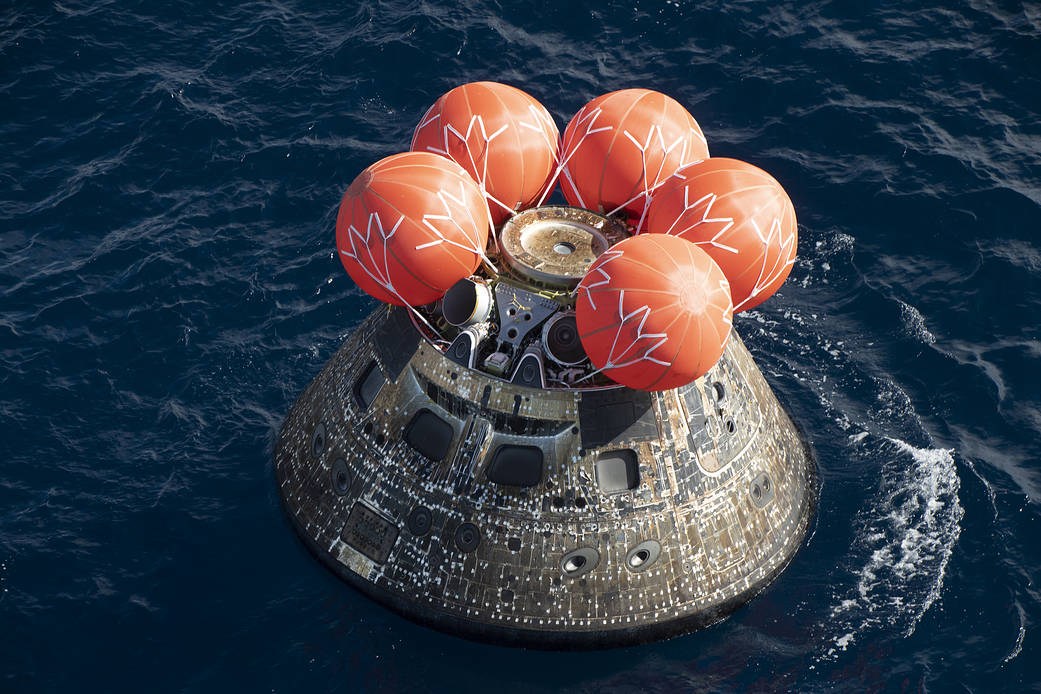
Orion Comes Home to Earth
At 12:40 p.m. EST, Dec. 11, 2022, the Orion spacecraft for the Artemis I mission splashed down in the Pacific Ocean after a 25.5-day mission to the Moon.
At 12:40 p.m. EST, Dec. 11, 2022, the Orion spacecraft for the Artemis I mission splashed down in the Pacific Ocean after a 25.5-day mission to the Moon. Flight controllers in mission control at NASA’s Johnson Space Center in Houston spent about two hours performing tests in open water to gather additional data about the spacecraft. Orion was then recovered by NASA’s Landing and Recovery team, U.S. Navy and Department of Defense partners aboard the USS Portland. Recovery personnel also spent time collecting detailed imagery of the spacecraft before beginning to pull the capsule into the USS Portland’s well deck. The ship will soon begin its trip back to U.S. Naval Base San Diego, where engineers will remove Orion from the ship in preparation for transport back to Kennedy Space Center in Florida for post-flight analysis. Orion is expected to arrive to shore Dec. 13.
Follow Orion’s travels on Earth by visiting the Artemis I blog.
Image Credit: NASA/James M. Blair
Last Updated: Dec 12, 2022
Editor: Monika Luabeya
Tags: Artemis I, Image of the Day, Moon to Mars, Orion Spacecraft

Artemis I Glows After Sunset
NASA’s Space Launch System (SLS) rocket with the Orion spacecraft aboard was seen lit by spotlights atop the mobile launcher at Launch Pad 39B as preparations for launch continued Sunday, Nov. 6, 2022, at NASA’s Kennedy Space Center in Florida.
NASA’s Space Launch System (SLS) rocket with the Orion spacecraft aboard is illuminated by spotlights atop the mobile launcher at Launch Pad 39B as preparations for launch continued Sunday, Nov. 6, 2022, at NASA’s Kennedy Space Center in Florida. SLS and Orion arrived at the launch pad on Friday, Nov. 4, after a nearly nine-hour journey from the Vehicle Assembly Building.
Artemis I is the first integrated test of our deep space exploration systems: the Orion spacecraft, SLS rocket, and supporting ground systems. Launch of the uncrewed flight test is targeted for Nov. 14 at 12:07 a.m. EST. See the full launch coverage schedule.
Image Credit: NASA/Joel Kowsky
Last Updated: Nov 7, 2022
Editor: Monika Luabeya
Tags: Artemis, Artemis I, Image of the Day, Kennedy Space Center, Moon to Mars, Orion Spacecraft, Space Launch System
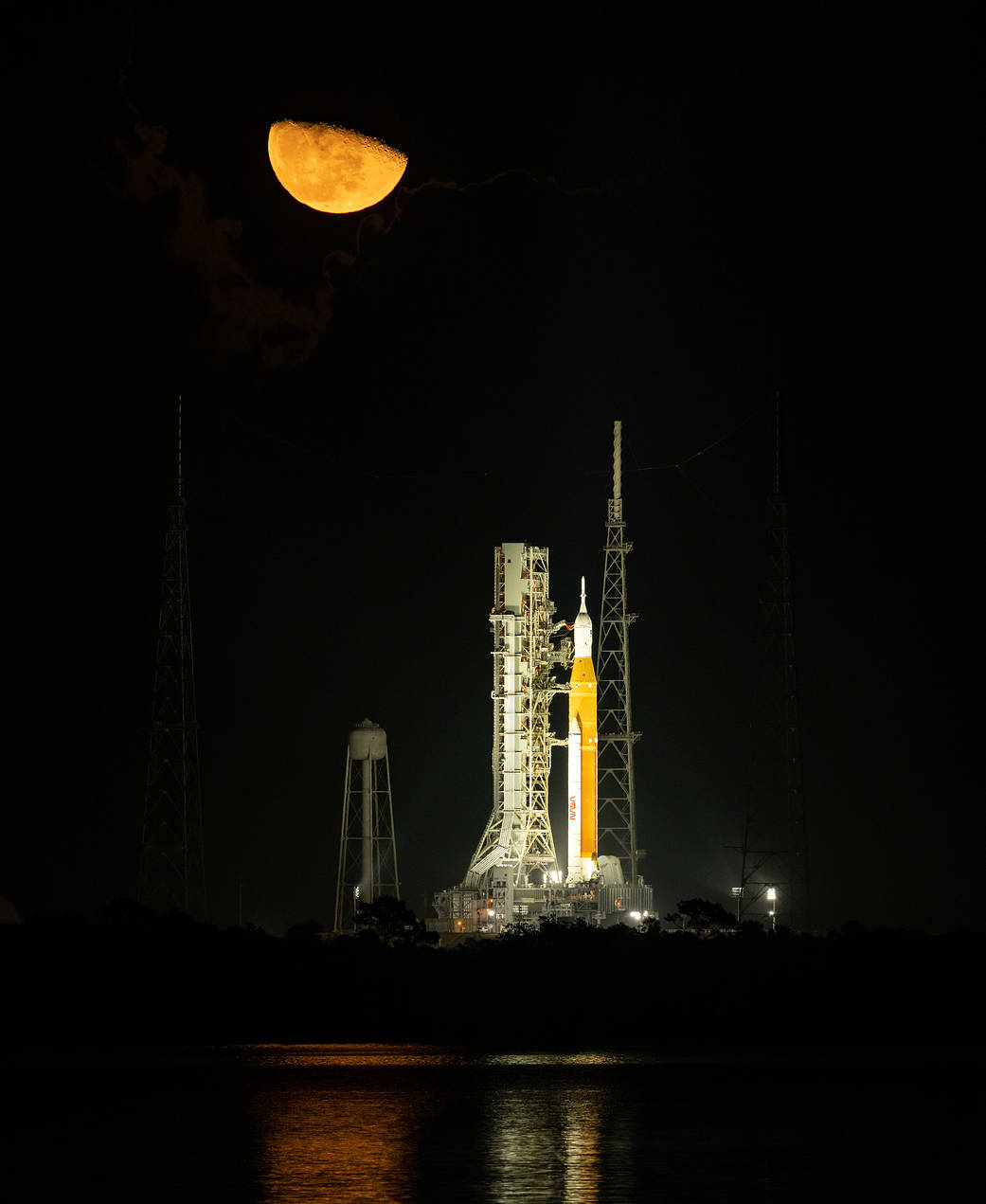
Moonlit Launch Preparations at NASA’s Kennedy Space Center
The Moon is seen rising above NASA’s Space Launch System (SLS) rocket with the Orion spacecraft aboard at Launch Pad 39B as preparations for launch continue, Monday, Nov. 14, 2022, at NASA’s Kennedy Space Center in Florida.
The Moon is seen rising above NASA’s Space Launch System (SLS) rocket with the Orion spacecraft at Launch Pad 39B as preparations for launch continue, Monday, Nov. 14, 2022, at NASA’s Kennedy Space Center in Florida. Launch of the uncrewed flight test is targeted for no earlier than Nov. 16 at 1:04 a.m. EST. Coverage begins with cryogenic fueling of the SLS at 3:30 p.m. EST on Nov. 15; launch coverage begins at 10:30 p.m. EST on Nov. 15.
NASA’s Artemis I flight test is the first integrated test of the agency’s deep space exploration systems: the Orion spacecraft, SLS rocket, and supporting ground systems.
Image Credit: NASA/Bill Ingalls
Last Updated: Nov 15, 2022
Editor: Monika Luabeya
Tags: Artemis I, Image of the Day, Kennedy Space Center, Moon to Mars, Orion Spacecraft, Space Launch System

We Are Going: Artemis I Launches
Our Space Launch System (SLS), the most powerful rocket in the world, carrying the Orion spacecraft launches on the Artemis I flight test, Wednesday, Nov. 16, 2022, from Launch Complex 39B at NASA’s Kennedy Space Center in Florida at 1:47 a.m. EST.
Our Space Launch System (SLS), the most powerful rocket in the world, carrying the Orion spacecraft launches on the Artemis I flight test, Wednesday, Nov. 16, 2022, from Launch Complex 39B at NASA’s Kennedy Space Center in Florida at 1:47 a.m. EST.
Artemis I is the first integrated flight test of the agency’s deep space exploration systems: the Orion spacecraft, SLS rocket, and ground systems. The mission is a critical part of our Moon to Mars exploration approach—an important test before flying astronauts on the Artemis II mission.
View more photos of Artemis I.
Image Credit: NASA/Bill Ingalls
Last Updated: Nov 16, 2022
Editor: Monika Luabeya
Tags: Artemis I, Image of the Day, Moon to Mars, Orion Spacecraft, Space Launch System
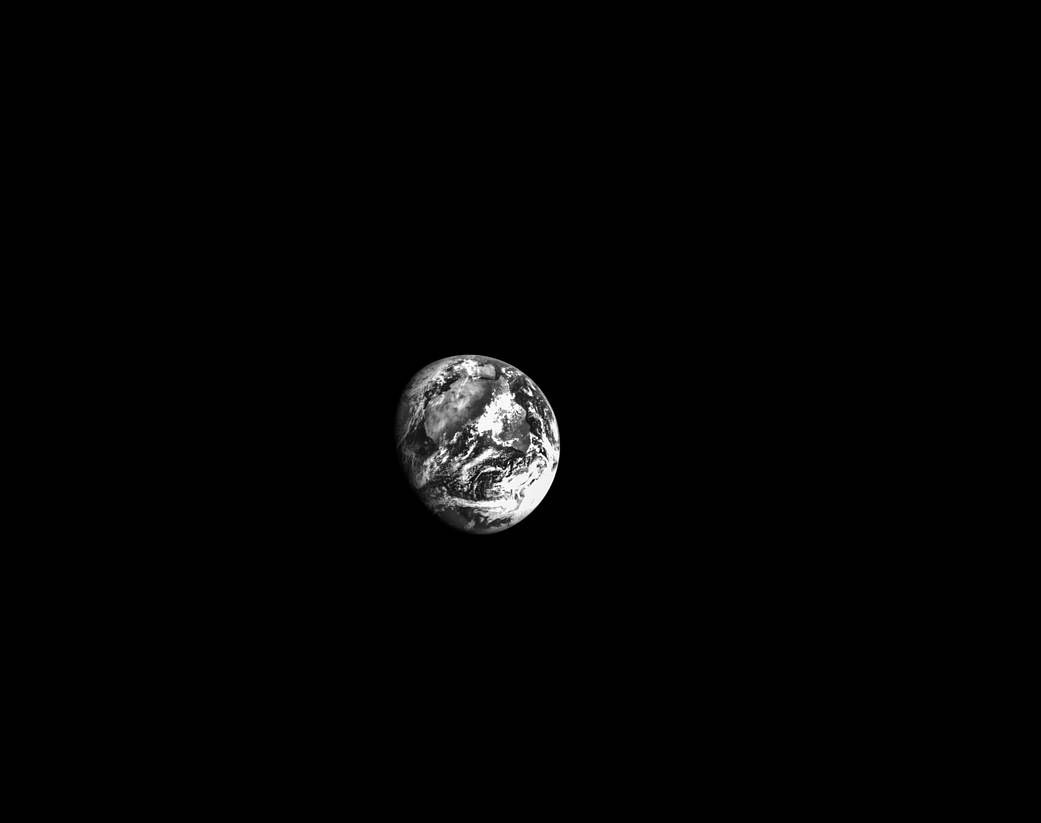 Orion’s Optical Navigation Camera Captures Earth
Orion’s Optical Navigation Camera Captures Earth
NASA’s uncrewed Orion spacecraft snapped this black and white photo of Earth on Nov. 17, 2022, the second day of the 25.5-day Artemis I mission.
NASA’s uncrewed Orion spacecraft snapped this black and white photo of Earth on Nov. 17, 2022, the second day of the 25.5-day Artemis I mission. The optical navigation camera is used to capture imagery of the Earth and the Moon at different phases and distances, which help establish its effectiveness as a way of determining its position in space for future missions under differing lighting conditions.
Follow Orion’s journey by visiting the Artemis I blog.
Image Credit: NASA
Last Updated: Nov 22, 2022
Editor: Monika Luabeya
Tags: Artemis I, Earth, Image of the Day, Moon to Mars, Orion Spacecraft
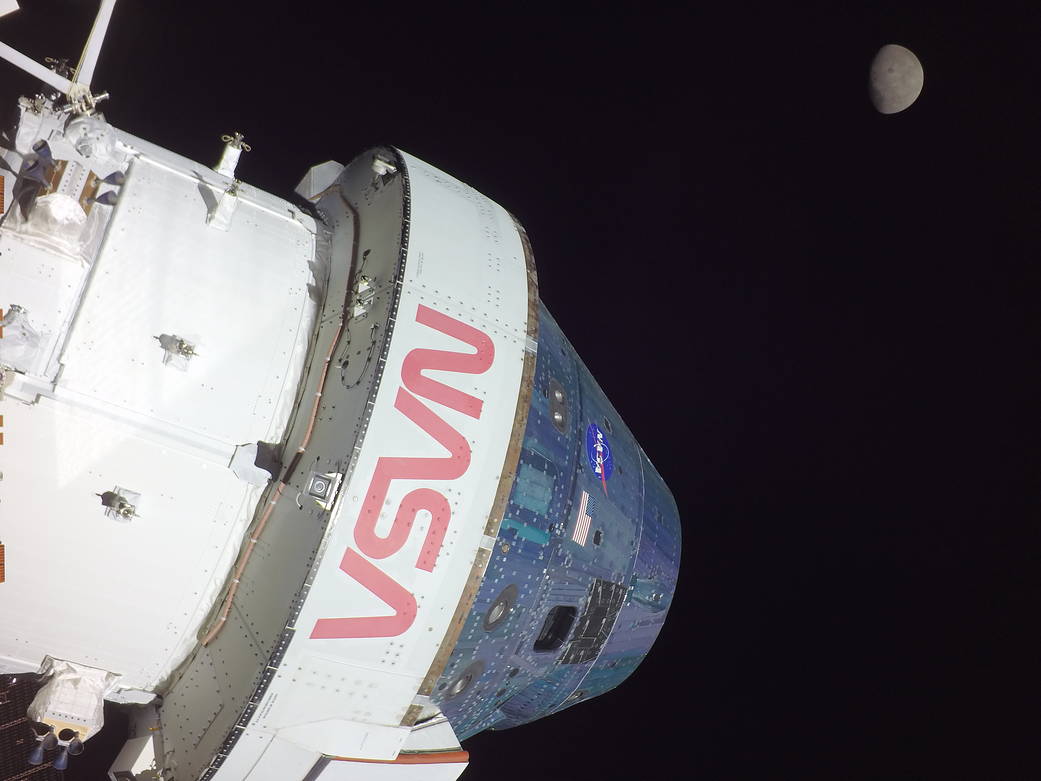
Orion Approaches Moon
On Nov. 20, the fifth day of the 25.5-day Artemis I mission, a camera mounted on the tip of one of Orion’s solar array wings captured this footage of the spacecraft and the Moon as it continued to grow nearer to our lunar neighbor.
On Nov. 20, the fifth day of the 25.5-day Artemis I mission, a camera mounted on the tip of one of Orion’s solar array wings captured this footage of the spacecraft and the Moon as it continued to grow nearer to our lunar neighbor.
The spacecraft entered the lunar sphere of influence at 2:09 p.m. EST, making the Moon, instead of Earth, the main gravitational force acting on the spacecraft. Orion completed its first flyby on the morning of Nov. 21, 2022.
Follow Orion’s journey by visiting the Artemis I blog.
Image Credit: NASA
Last Updated: Nov 22, 2022
Editor: Monika Luabeya
Tags: Artemis I, Earth’s Moon, Image of the Day, Moon to Mars, Orion Spacecraft
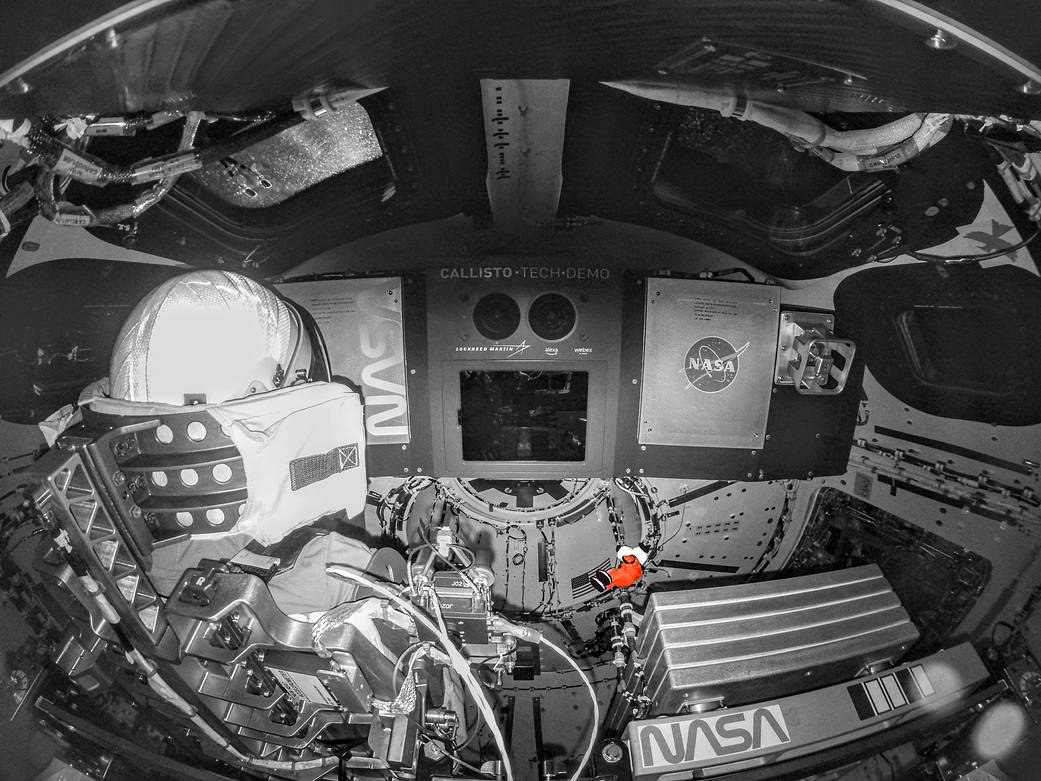
Snoopy Hitches Ride to Space Aboard Artemis I
Snoopy, the zero-gravity indicator for NASA’s Artemis I flight test, floating in space Nov. 20, 2022, while attached to his tether in the Orion spacecraft.
Snoopy, the zero-gravity indicator for NASA’s Artemis I flight test, floats in space on Nov. 20, 2022, while attached to his tether in the Orion spacecraft. In this enhanced image, Snoopy stands out in a custom orange spacesuit, while Orion’s interior has been shaded black and white for contrast. The character’s spacesuit is modeled after the suit astronauts will wear during launch and reentry in Orion on future missions to the Moon. NASA has shared an association with Charles M. Schulz and Snoopy since the Apollo missions and the relationship continues under Artemis. Snoopy was selected as the zero-gravity indicator for the flight because of the inspiration and excitement the character has provided for human spaceflight for more than 50 years.
Image Credit: NASA
Last Updated: Nov 23, 2022
Editor: Monika Luabeya
Tags: Artemis I, Image of the Day, Moon to Mars, Orion Spacecraft
On the sixth day of the Artemis I mission, Nov. 21, 2022, the Orion spacecraft’s optical navigation camera captured black-and-white images of craters on the Moon below.
On the sixth day of the Artemis I mission, Nov. 21, 2022, the Orion spacecraft’s optical navigation camera captured black-and-white images of craters on the Moon below. This photo and others captured are the closest photos of the Moon from a human-rated vessel since Apollo. The optical navigation camera takes black-and-white imagery of the Earth and the Moon at different phases and distances; this technology demonstration will help prove its effectiveness for future missions with crew.
Follow Orion’s journey by visiting the Artemis I blog.
Image Credit: NASA
Last Updated: Dec 1, 2022
Editor: Monika Luabeya
Tags: Artemis I, Earth’s Moon, Image of the Day, Orion Spacecraft
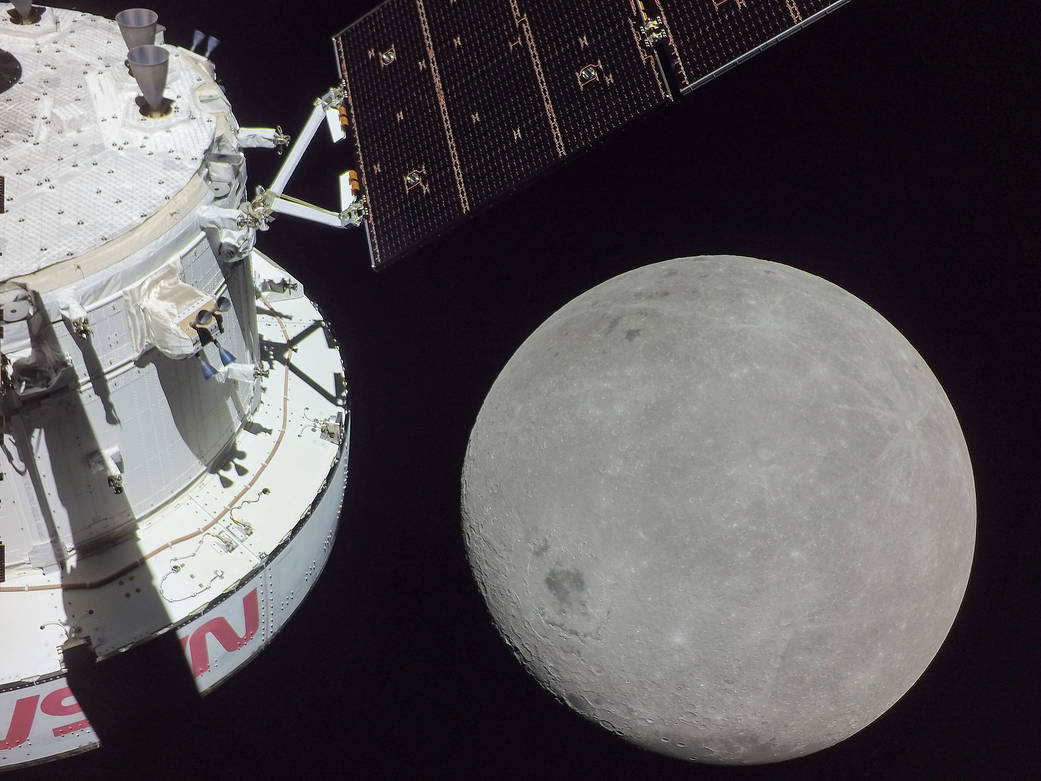 Orion Approaches Moon for Outbound Powered Flyby
Orion Approaches Moon for Outbound Powered Flyby
A portion of the far side of the Moon looms large just beyond the Orion spacecraft in this image taken Nov. 21, the sixth day of the Artemis I mission, by a camera on the tip of one of Orion’s solar arrays.
A portion of the far side of the Moon looms large just beyond the Orion spacecraft in this image taken Monday, Nov. 21, the sixth day of the Artemis I mission, by a camera on the tip of one of Orion’s solar arrays. The darkest spot visible near the middle of the image is Mare Orientale.
Image Credit: NASA
See more images from Orion’s flight in our Flickr gallery.
Get daily mission updates from our Artemis I blog.
Last Updated: Nov 28, 2022
Editor: Michael Bock
Tags: Artemis I, Image of the Day
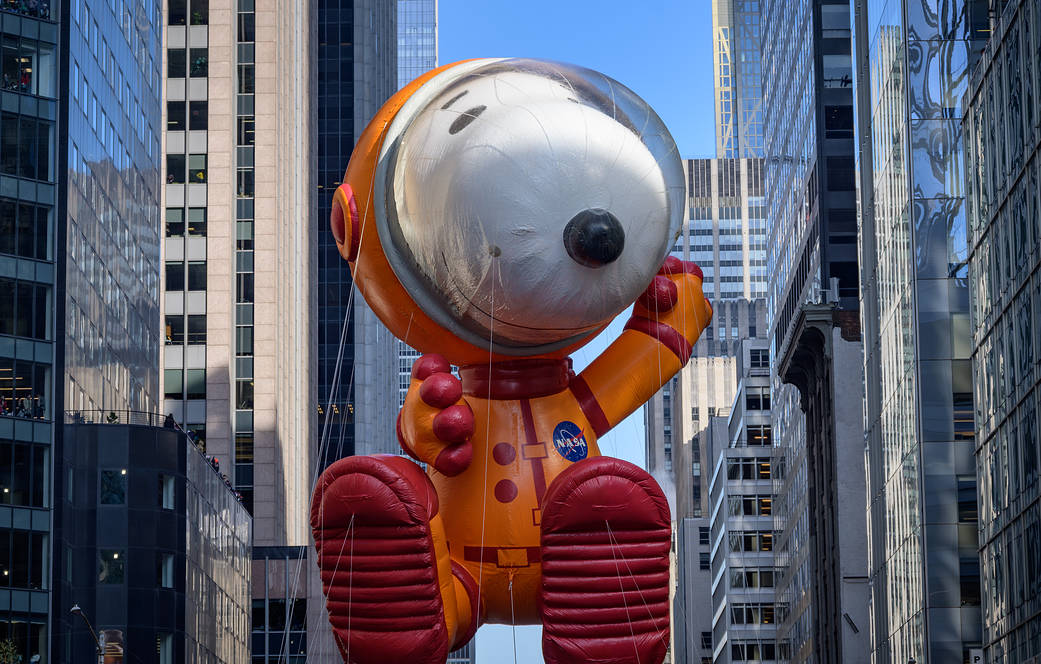
Astronaut Snoopy ‘Lands’ in New York
The annual Thanksgiving event was held Nov. 24, 2022.
The Astronaut Snoopy balloon is seen floating along in the Macy’s Thanksgiving Day Parade on Thursday, Nov. 24, 2022, in New York City. The Astronaut Snoopy balloon is flying in New York City at the same time that Snoopy also flies around the Moon in the Orion spacecraft as a zero gravity indicator for the Artemis I mission.
Credit: NASA/Bill Ingalls
Last Updated: Nov 25, 2022
Editor: Brian Dunbar
Tags: Image of the Day
In this image, Orion captures a unique view of Earth and the Moon, seen from a camera mounted on one of the spacecraft’s solar arrays.
On Monday, Nov. 28, 2022, NASA’s Orion spacecraft reached its maximum distance from Earth during the Artemis I mission—268,563 miles away from our home planet, farther than any spacecraft designed to send humans to space and back has gone before. In this image, Orion captures a unique view of Earth and the Moon, seen from a camera mounted on one of the spacecraft’s solar arrays.
Image credit: NASA
Watch a live video stream from the Orion spacecraft.
Track NASA’s Artemis I mission in real time.
Last Updated: Nov 29, 2022
Editor: Michael Bock
Tags: Artemis I, Image of the Day
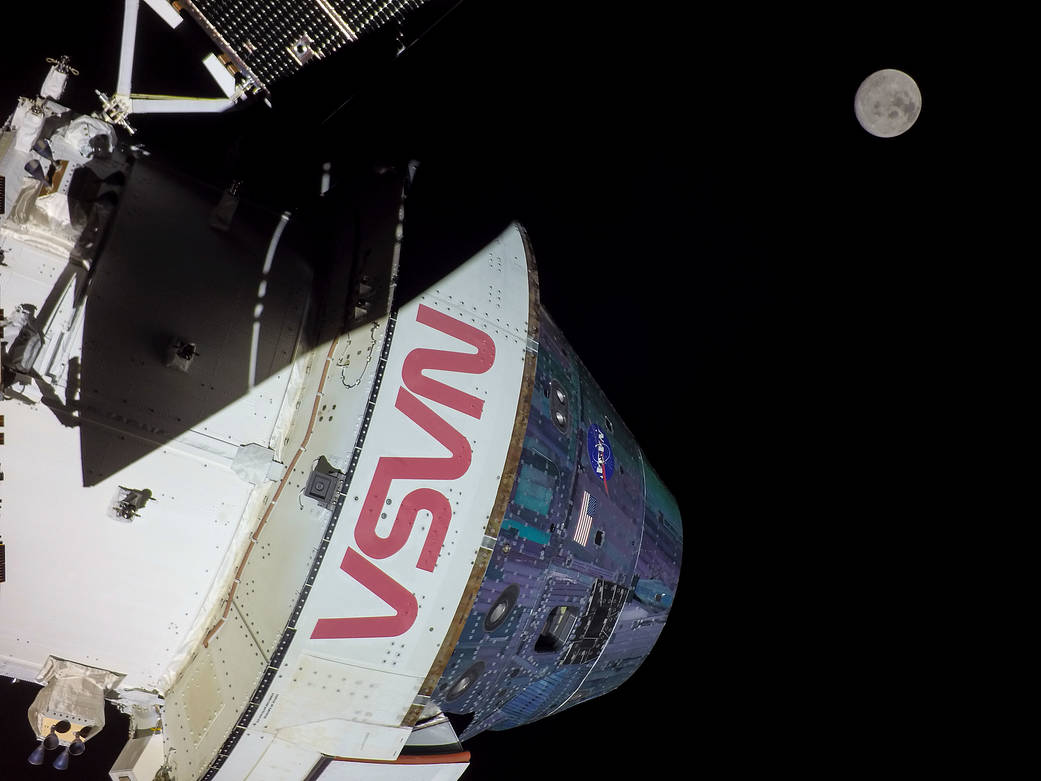
Home to Earth
Orion Approaches Moon Before Return Flyby
On the 19th day of the Artemis I mission, Dec. 4, 2022, a camera mounted on the Orion spacecraft captured the Moon just in frame as Orion prepared for its return powered flyby on Dec. 5, when it passed approximately 79 miles above the lunar surface.
On the 19th day of the Artemis I mission, Dec. 4, 2022, a camera mounted on the Orion spacecraft captured the Moon just in frame as Orion prepared for its return powered flyby on Dec. 5, when it passed approximately 79 miles above the lunar surface.
Orion performed the return powered flyby burn at 11:43 a.m. EST, changing the velocity of the spacecraft by approximately 655 mph (961 feet per second). The return powered flyby is the last large maneuver of the mission, with only smaller trajectory corrections to target Earth remaining.
Follow Orion’s journey by visiting the Artemis I blog.
Image Credit: NASA
Last Updated: Dec 5, 2022
Editor: Monika Luabeya
Tags: Artemis I, Image of the Day, Moon to Mars, Orion Spacecraft
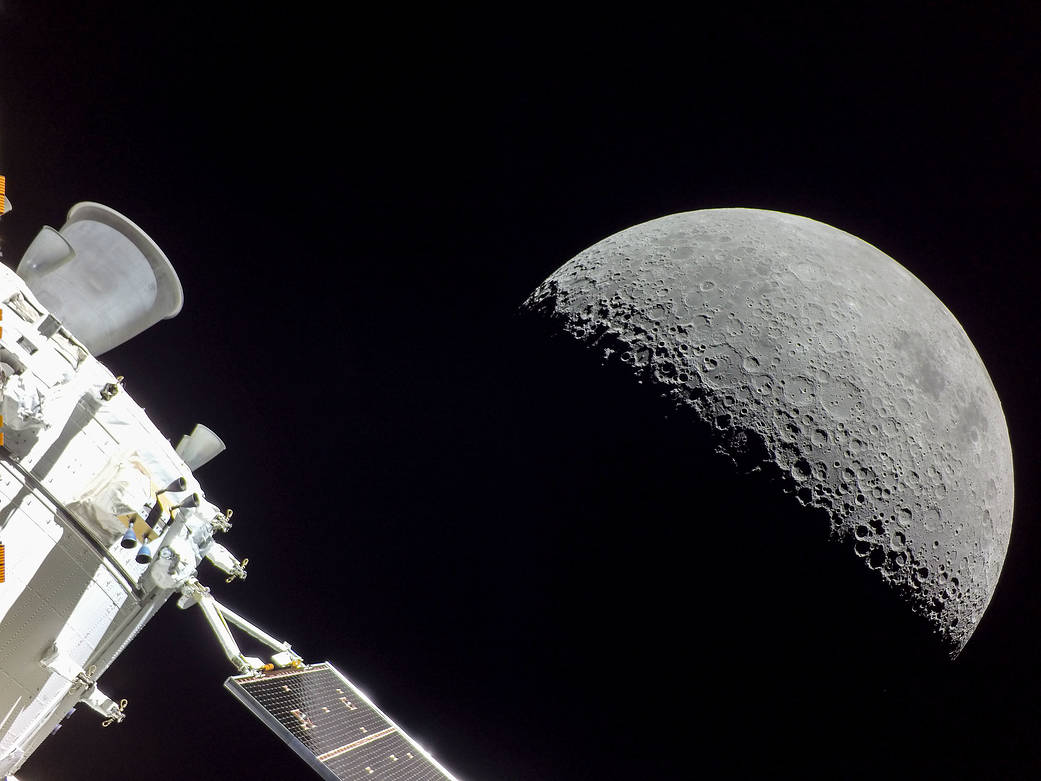
Orion Gazes at Moon Before Return to Earth
On flight day 20 of the Artemis I mission, Dec. 5, 2022, Orion captured the Moon on the day of return powered flyby, the final major engine maneuver of the flight test.
On flight day 20 of the Artemis I mission, Dec. 5, 2022, Orion captured the Moon on the day of return powered flyby, the final major engine maneuver of the flight test. The burn, which used the spacecraft’s main engine on the European-built service module, lasted 3 minutes, 27 seconds, and changed the velocity of the spacecraft by about 655 mph (961 feet per second). It also committed the spacecraft to a Dec. 11 splashdown, which will air live on NASA Television, our website, and the NASA app.
Follow Orion’s journey by visiting the Artemis I blog.
Image Credit: NASA
Last Updated: Dec 9, 2022
Editor: Monika Luabeya
Tags: Artemis I, Earth’s Moon, Image of the Day, Moon to Mars, Orion Spacecraft
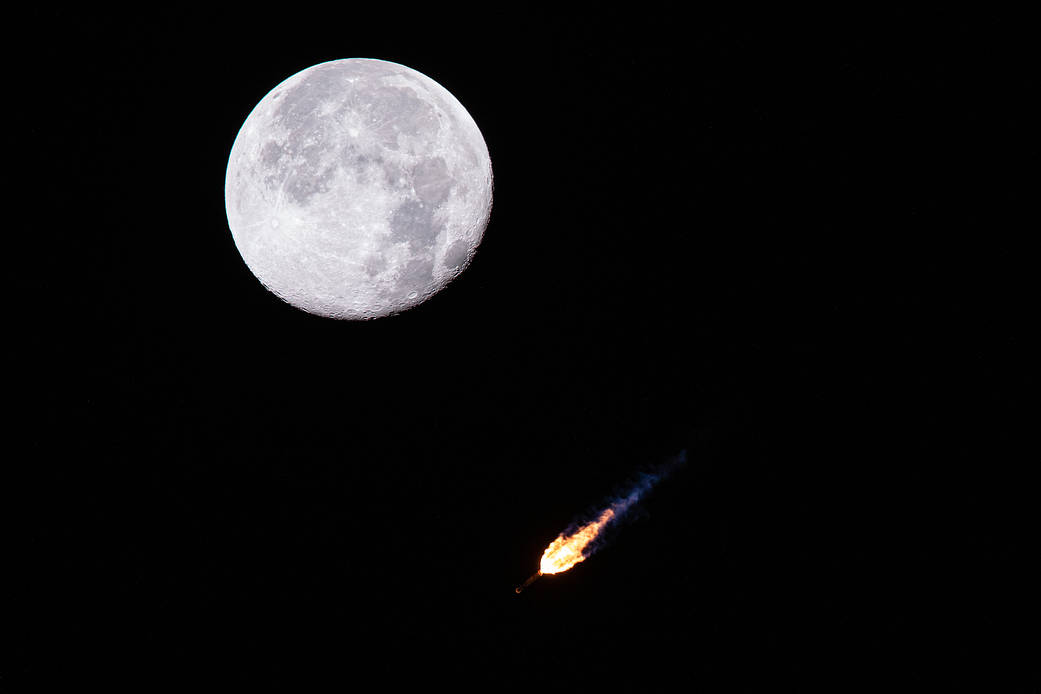 Liftoff! Successful Launch for JPSS-2, LOFTID
Liftoff! Successful Launch for JPSS-2, LOFTID
The Moon makes a stunning backdrop for the successful launch of the third in a series of polar-orbiting weather satellites for the National Oceanic and Atmospheric Administration (NOAA) and our Low-Earth Orbit Flight Test of an Inflatable Decelerator (LOFTID) on Nov. 10 at 1:49 a.m. PST from Vandenberg Space Force Base in California.
The Moon makes a stunning backdrop for the successful launch of the third in a series of polar-orbiting weather satellites for the National Oceanic and Atmospheric Administration (NOAA) and our Low-Earth Orbit Flight Test of an Inflatable Decelerator (LOFTID) on Nov. 10 at 4:49 a.m. EST from Vandenberg Space Force Base in California. A United Launch Alliance Atlas V rocket carried the Joint Polar Satellite System (JPSS)-2 and LOFTID.
JPSS-2 will circle the globe 14 times a day 512 miles above Earth, providing forecasters the benefit of three polar-orbiting satellites operating simultaneously, joining its predecessors Suomi National Polar-orbiting Partnership (Suomi NPP) and NOAA-20.
Following JPSS-2’s deployment, the LOFTID heat shield autonomously inflated and re-entered Earth’s atmosphere, splashing down about 500 miles off the coast of Hawaii just over two hours and ten minutes after launch.
Image Credit: United Launch Alliance
Last Updated: Nov 14, 2022
Editor: Monika Luabeya
Tags: Climate, Image of the Day, Space Tech
In this illustration by Rick Giudice from August 1973, the Pioneer 10 spacecraft passes by the gas giant planet Jupiter.
In this illustration by Rick Giudice from August 1973, the Pioneer 10 spacecraft passes by the gas giant planet Jupiter. The spacecraft’s primary goal was to explore Jupiter, its satellites, its magnetic field, and trapped radiation belts. Pioneer 10 was the first satellite to pass through an asteroid belt and the first spacecraft to obtain detailed images of Jupiter and its moons. Between 1972 and 1974, the Deep Space Network ground stations tracked the Pioneer 10 for over 21,000 hours. Pioneer 10 fell silent on its 30-year anniversary in 2002.
Learn more about the Pioneer missions.
Image Credit: NASA
Last Updated: Dec 8, 2022
Editor: Monika Luabeya
Tags: Image of the Day, Jupiter, Pioneer
![]() Apollo 17 Astronauts Capture Iconic Blue Marble 50 Years Ago
Apollo 17 Astronauts Capture Iconic Blue Marble 50 Years Ago
This classic photograph of the Earth was taken on Dec. 7, 1972, by the crew of the final Apollo mission, Apollo 17, as they traveled toward the moon on their lunar landing mission.
This classic photograph of the Earth was taken on Dec. 7, 1972, by the crew of the final Apollo mission, Apollo 17, as they traveled toward the moon on their lunar landing mission. For the first time, the Apollo trajectory made it possible to photograph the south polar ice cap, shown here along with heavy cloud cover in the Southern Hemisphere.
The Apollo 17 crew consisted of astronauts Eugene A. Cernan, mission commander; Ronald E. Evans, command module pilot; and Harrison H. Schmitt, lunar module pilot. While astronauts Cernan and Schmitt descended in the lunar module to explore the moon, astronaut Evans remained with the command and service modules in lunar orbit.
Read about the Apollo 17 launch.
Image Credit: NASA
Last Updated: Dec 7, 2022
Editor: Monika Luabeya
Tags: Apollo 17, Earth, Image of the Day
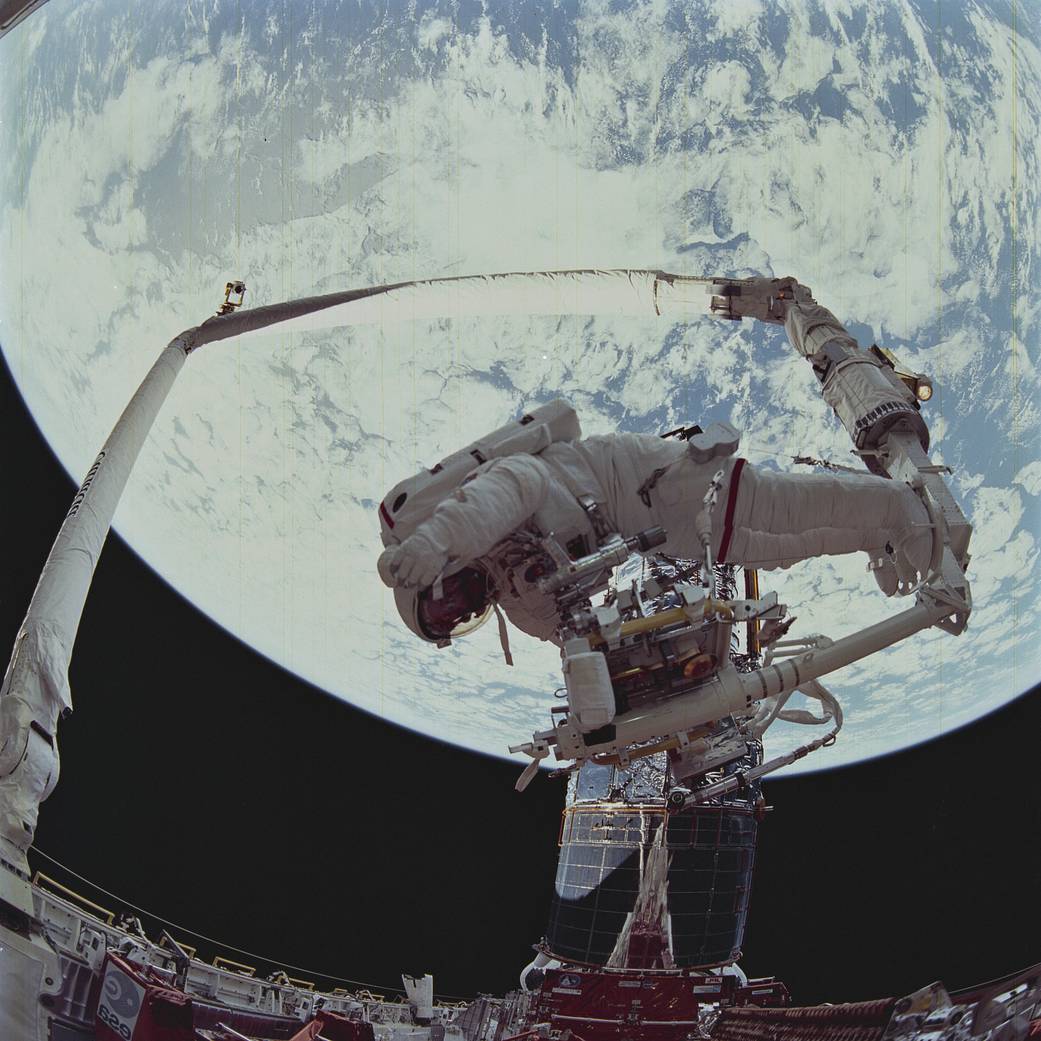 Endeavour Crew Make Repairs to Hubble
Endeavour Crew Make Repairs to Hubble
In this Dec. 1993, onboard view from Space Shuttle mission STS-61 shows astronauts Story Musgrave and Jeffrey Hoffman’s Extra Vehicular Activity (EVA) to repair the Hubble Space Telescope.
In this Dec. 1993, onboard view from Space Shuttle mission STS-61 shows astronauts Story Musgrave and Jeffrey Hoffman’s Extra Vehicular Activity (EVA) to repair the Hubble Space Telescope. STS-61 was the first service mission to the Hubble Space Telescope.
On flight day four, Dec. 4 at 10:46 p.m. EST, Musgrave and Hoffman began the first spacewalk. For five days, they or another pair would exit the airlock at around the same time each evening and spend between six and eight hours in the payload bay.
Learn more about Space Shuttle Endeavour.
Image Credit: NASA
Last Updated: Dec 6, 2022
Editor: Monika Luabeya
Tags: Humans in Space, Image of the Day, NASA History, Space Shuttle, STS-61
 Hubble Spies Emission Nebula-Star Cluster Duo
Hubble Spies Emission Nebula-Star Cluster Duo
This whole collection is NGC 1858, an open star cluster in the northwest region of the Large Magellanic Cloud, a satellite galaxy of our Milky Way that boasts an abundance of star-forming regions. NGC 1858 is estimated to be around 10 million years old.
Against a backdrop littered with tiny pinpricks of light glint a few, brighter stars. This whole collection is NGC 1858, an open star cluster in the northwest region of the Large Magellanic Cloud, a satellite galaxy of our Milky Way that boasts an abundance of star-forming regions. NGC 1858 is estimated to be around 10 million years old.
Open clusters are a type of star cluster with loose gravitational attraction between the stars, which causes the cluster to be irregularly shaped and its stars to be spread out. NGC 1858 is also an emission nebula, which is a cloud of interstellar gas that has been ionized by ultraviolet wavelengths radiating off of nearby stars. The gas of the nebula emits its own light at visible wavelengths, seen here as a faint cloud that populates the middle and bottom right of the image.
The stars within this young cluster are at different phases of their evolution, making it a complex collection. Within NGC 1858, researchers have detected a protostar, a very young, emerging star, indicating that star formation within the cluster may still be active or has stopped very recently. The presence of an emission nebula also suggests that star formation recently occurred here, since the radiation required to ionize the gas of the nebula comes from stars that only live a short time.
NGC 1858 is located about 160,000 light-years away in the constellation Dorado and contains multiple massive stars, which can be seen shining brightly throughout the center of the image. The cluster is located in a crowded area of the sky, and the large number of stars around the cluster makes it difficult to study alone. To survey these distant stars, scientists relied on the Hubble Space Telescope’s unique resolution and sensitivity at visible and infrared wavelengths.
Image Credit: NASA, ESA and G. Gilmore (University of Cambridge); Processing: Gladys Kober (NASA/Catholic University of America)
Media Contact:
Claire Andreoli
NASA’s Goddard Space Flight Center, Greenbelt, MD
301-286-1940
Last Updated: Dec 2, 2022
Editor: Andrea Gianopoulos
Tags: Goddard Space Flight Center, Hubble Space Telescope, Image of the Day, Stars, Universe
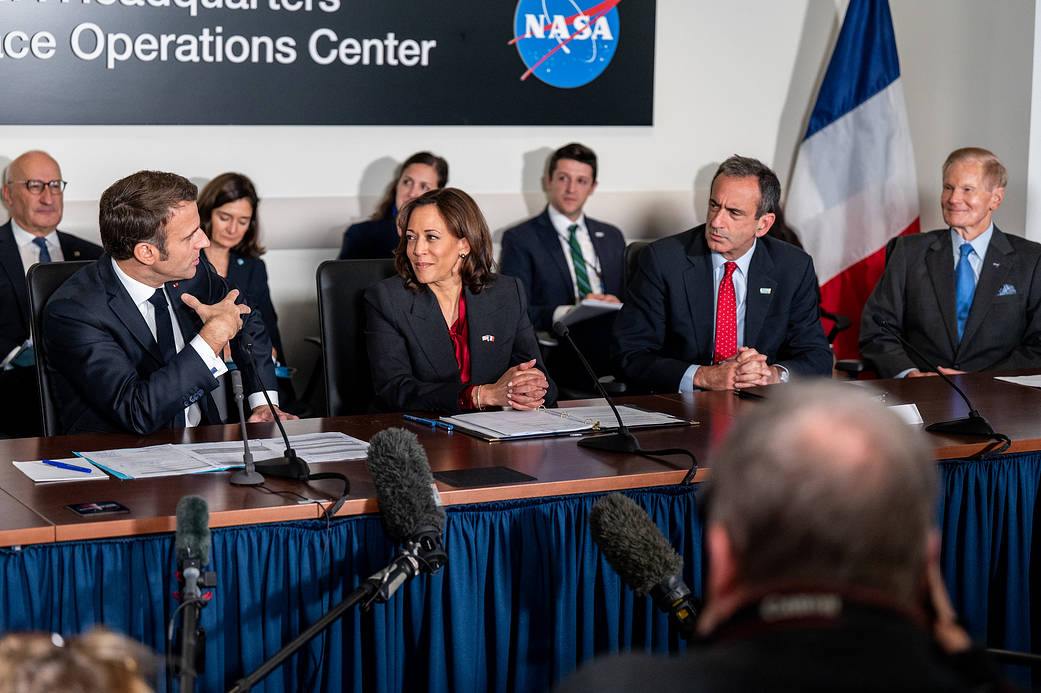 Kamala Harris and French President Macron Meet at NASA Headquarters
Kamala Harris and French President Macron Meet at NASA Headquarters
Vice President Kamala Harris delivers remarks prior to meeting with French President Emmanuel Macron and NASA Administrator Bill Nelson for an Earth Science briefing, Wednesday, Nov. 30, 2022, at the Mary W. Jackson NASA Headquarters building in Washington.
French President Emmanuel Macron (far left) delivers remarks prior to meeting with Vice President Kamala Harris (second from left) and NASA Administrator Bill Nelson (far right) for an Earth Science briefing, Wednesday, Nov. 30, 2022, at the Mary W. Jackson NASA Headquarters building in Washington. Also shown is Phil Gordon, national security advisor to the vice president.
Administrator Nelson and Vice President Harris met with Macron to highlight space cooperation between the United States and France.
Photo Credit: NASA/Keegan Barber
Last Updated: Nov 30, 2022
Editor: Michael Bock
Tags: Image of the Day
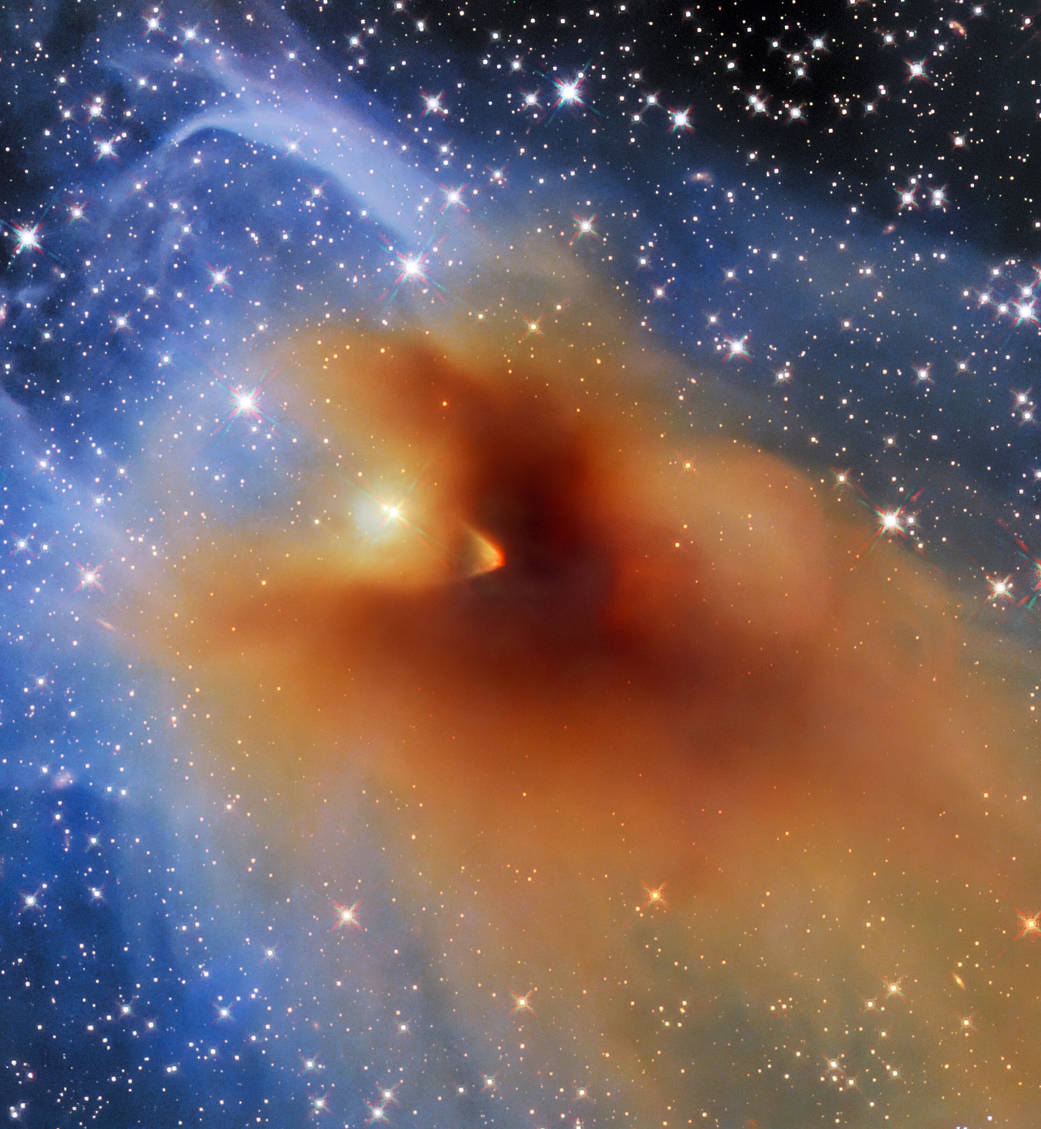
A small, dense cloud of gas and dust called CB 130-3 blots out the center of this image from the NASA/ESA Hubble Space Telescope.
A small, dense cloud of gas and dust called CB 130-3 blots out the center of this image from the NASA/ESA Hubble Space Telescope. CB 130-3 is an object known as a dense core, a compact agglomeration of gas and dust. This particular dense core is in the constellation Serpens and seems to billow across a field of background stars.
Dense cores like CB 130-3 are the birthplaces of stars and are of particular interest to astronomers. During the collapse of these cores enough mass can accumulate in one place to reach the temperatures and densities required to ignite hydrogen fusion, marking the birth of a new star. While it may not be obvious from this image, a compact object teetering on the brink of becoming a star is embedded deep within CB 130-3.
Astronomers used Hubble’s Wide Field Camera 3 to better understand the environment surrounding this fledgling star. As this image shows, the density of CB 130-3 isn’t constant; the outer edges of the cloud consist of only tenuous wisps, whereas at its core CB 130-3 blots out background light entirely. The gas and dust making up CB 130-3 affect not only the brightness but also the apparent color of background stars, with stars toward the cloud’s center appearing redder than their counterparts at the outskirts of this image. Astronomers used Hubble to measure this reddening effect and chart out the density of CB 130-3, providing insights into the inner structure of this stellar nursery.
Text credit: European Space Agency (ESA)
Image credit: ESA/Hubble, NASA & STScI, C. Britt, T. Huard, A. Pagan
Media Contact:
Claire Andreoli
NASA’s Goddard Space Flight Center, Greenbelt, MD
301-286-1940
Last Updated: Nov 18, 2022
Editor: Andrea Gianopoulos
Tags: Goddard Space Flight Center, Hubble Space Telescope, Image of the Day, Nebulae, Stars, Universe
 First Nations Launch Teams Build Rockets
First Nations Launch Teams Build Rockets
Stephanie Yazzie, Northern Arizona University student and NAU Space Jacks team member, poses with her team’s rocket in this photo from the 2019 NASA First Nations Launch (FNL) competition.
Stephanie Yazzie, Northern Arizona University student and NAU Space Jacks team member, poses with her team’s rocket in this photo from the 2019 NASA First Nations Launch (FNL) competition.
In this competition, students from Tribal Colleges and Universities, Native American Serving Nontribal Institutions, and schools with American Indian Science and Engineering Society chapters demonstrated their engineering and design skills.
FNL 2022, an Artemis Student Challenge, called for faculty advisor-led teams of undergraduate students to conceive, design, fabricate, and fly dual deploy high-power rockets within three challenges with various technical requirements. Winners were chosen by a pool of Native American NASA and industry judges for the competition also included four FNL alumni who completed their STEM degrees and became engineers in the aerospace field.
Explore more Minority University Research and Education Project opportunities and resources here.
We’re celebrating Native American Heritage Month, highlighting the achievements of Native Americans at NASA, and bolstering the next generation of talent.
Image credit: Carthage College/Christine Bolz
Last Updated: Nov 17, 2022
Editor: Monika Luabeya
Tags: Artemis, Image of the Day, Moon to Mars
 Celebrating Native American Heritage Month with Jerry C. Elliott
Celebrating Native American Heritage Month with Jerry C. Elliott
Jerry Elliott, a former NASA physicist and one of the first Native Americans hired at NASA’s Johnson Space Center, speaks during Native American Heritage Month event in 2017 at NASA’s Marshall Space Flight Center.
Jerry C. Elliott, a former NASA physicist and one of the first Native Americans hired at NASA’s Johnson Space Center, speaks during Native American Heritage Month event in 2017 at NASA’s Marshall Space Flight Center.
He joined NASA in April 1966, as a Flight Mission Operations Engineer at NASA’s Mission Control Center and held technical and managerial positions with highly successful accomplishments in many fields including spacecraft systems, mission operations, astronaut crew equipment, scientific experiments and technical management.
Elliott received the Presidential Medal of Freedom, the highest U.S. civilian honor, for duties as Retrofire Officer at NASA Mission Control Center during the aborted Apollo 13 space mission with the safe return of the flight crew.
View the Native American Heritage Month Gallery.
Image Credit: Emmett Given
Last Updated: Nov 10, 2022
Editor: Monika Luabeya
Tags: Apollo 13, Image of the Day 24
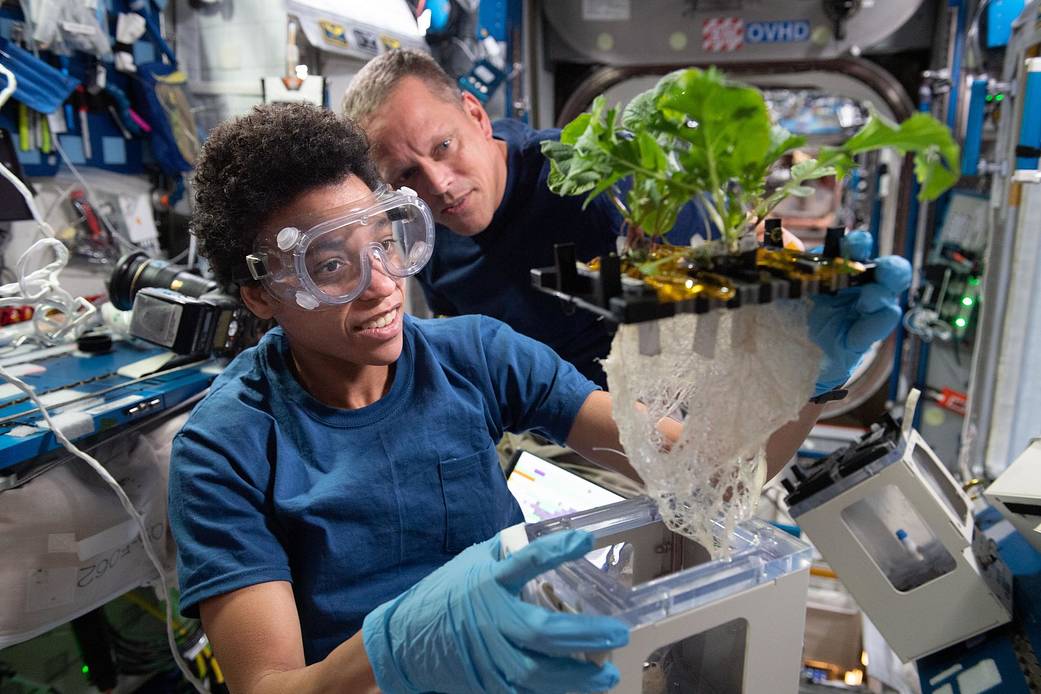 Astronauts Jessica Watkins and Bob Hines Study Farming in Space
Astronauts Jessica Watkins and Bob Hines Study Farming in Space
In this image from June 24, 2022, NASA astronauts Jessica Watkins and Bob Hines work on the XROOTS space botany investigation, which used the International Space Station’s (ISS) Veggie facility to test soilless hydroponic and aeroponic methods to grow plants.
In this image from June 24, 2022, NASA astronauts Jessica Watkins and Bob Hines, part of NASA’s SpaceX Crew-4, work on the XROOTS space botany investigation, which used the International Space Station’s (ISS) Veggie facility to test soilless methods to grow plants. The space agricultural study could enable production of crops on a larger scale to sustain crews on future space explorations farther away from Earth and could enhance cultivation of plants in terrestrial settings such as greenhouses, contributing to better food security for people on Earth.
Learn about the latest scientific research on the ISS.
Image Credit: NASA
Last Updated: Nov 9, 2022
Editor: Monika Luabeya
Tags: Benefits to You, Image of the Day, International Space Station (ISS), Space Station Research and Technology
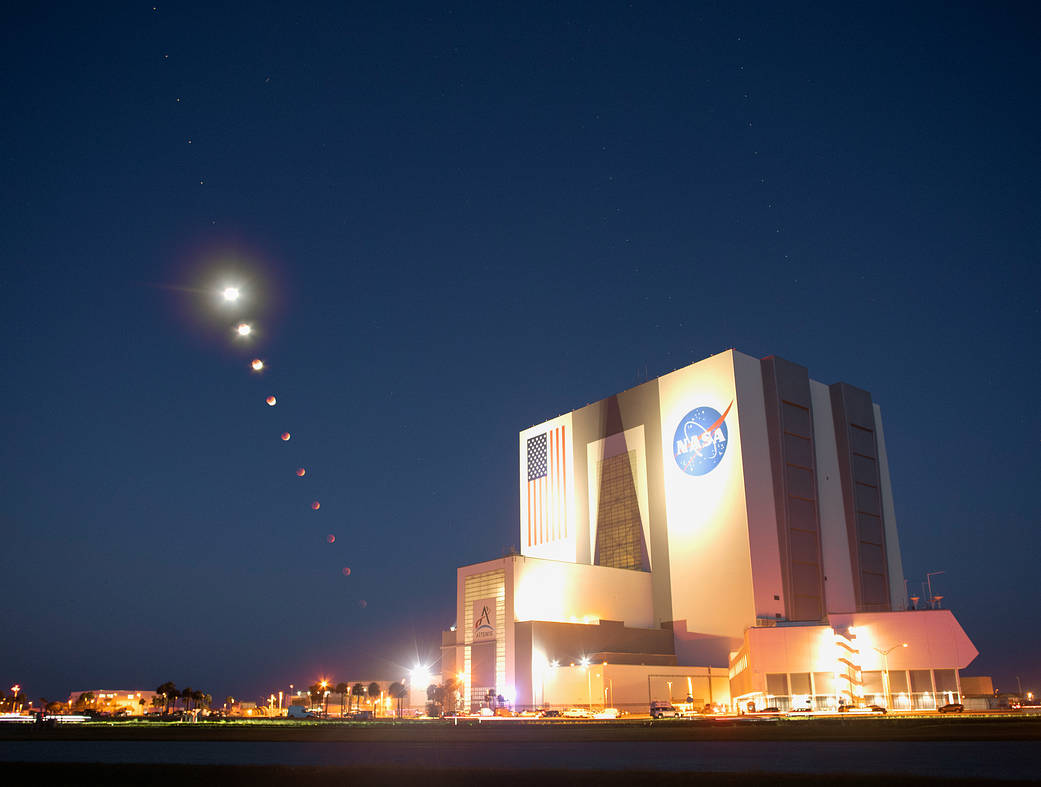
Blood Moon Total Eclipse at NASA’s Kennedy Space Center
This composite made from ten images shows the progression of the Moon during a total lunar eclipse above the Vehicle Assembly Building, Nov. 8, 2022, at NASA’s Kennedy Space Center in Florida.
This composite made from ten images shows the progression of the Moon during a total lunar eclipse above the Vehicle Assembly Building, Nov. 8, 2022, at NASA’s Kennedy Space Center in Florida. Visible trailing the Moon in this composite is Mars.
For North America, the partial eclipse began at 4:09 a.m. EST, with totality beginning at 5:16 a.m. One feature of a total lunar eclipse is the Moon’s red hue during totality. The red color occurs because of the refraction, filtering, and scattering of light by Earth’s atmosphere.
Image Credit: NASA/Joel Kowsky
Last Updated: Nov 8, 2022
Editor: Monika Luabeya
Tags: Earth’s Moon, Image of the Day, Kennedy Space Center
For more information, please following the link:
https://www.nasa.gov/multimedia/imagegallery/iotd.html
Artemis I Mission Highlights – Screenshots

Orion Comes Home to Earth
At 12:40 p.m. EST, Dec. 11, 2022, the Orion spacecraft for the Artemis I mission splashed down in the Pacific Ocean after a 25.5-day mission to the Moon.
Artemis I Mission Highlights 24:10 mins
NASA Johnson 6,632 views Dec 11, 2022
From launch to splashdown, NASA’s Orion spacecraft completed its first deep-space mission with a splashdown in the Pacific Ocean, west of Baja California, at 9:40 a.m. PST (12:40 p.m. EST) Sunday. The record-breaking Artemis mission traveled more than 1.4 million miles on a path around the Moon and returned safely to Earth. Splashdown was the final milestone of the Artemis I mission, which began with a successful liftoff of NASA’s Space Launch System (SLS) rocket Nov. 16, from Launch Pad 39B at NASA’s Kennedy Space Center in Florida. Over the course of 25.5 days, NASA tested Orion in the harsh environment of deep space before flying astronauts on Artemis II. During the mission, Orion performed two lunar flybys, coming within 80 miles of the lunar surface. At its farthest distance during the mission, Orion traveled nearly 270,000 miles from our home planet, more than 1,000 times farther than where the International Space Station orbits Earth, to intentionally stress systems before flying crew. Prior to entering the Earth’s atmosphere, the crew module separated from its service module, which is the spacecraft’s propulsive powerhouse provided by ESA (European Space Agency). During re-entry, Orion endured temperatures of about 5,000 degrees Fahrenheit, half as hot as the surface of the Sun. Within about 20 minutes, Orion slowed from nearly 25,000 mph to about 20 mph for its parachute-assisted splashdown. During the flight test, Orion stayed in space longer than any spacecraft designed for astronauts without docking to a space station. While in a distant lunar orbit, Orion surpassed the record for distance traveled by a spacecraft designed to carry humans, previously set during Apollo 13. Select music courtesy of Gothic Storm Publishing
Parachutes: Bringing Orion Home 3:02 mins
3,358 views Dec 9, 2022
After Orion enters the Earth’s atmosphere at the conclusion of its 25.5-day mission, the spacecraft will rely on its rigorously tested parachute system to slow its speed and allow for a gentle splashdown. Koki Machin, chief engineer of Orion’s parachute assembly system, describes the process and the path to certification of the system. Follow the mission: Twitter: https://twitter.com/NASAArtemis Instagram: https://www.instagram.com/nasaartemis Facebook: https://www.facebook.com/NASAArtemis Get the latest from NASA weekly: www.nasa.gov/subscribe
Artemis All Access – Updates on Orion’s Journey in Space – 12/9/22 – 5:26 mins
NASA Johnson 17,631 views Dec 9, 2022
Artemis All Access – Episode 6 Artemis All Access is your look at the latest in Artemis I, the people and technology behind the mission, and what is coming up next. This uncrewed flight test around the Moon will pave the way for a crewed flight test and future human lunar exploration as part of Artemis. Learn more about the mission and track the Orion spacecraft’s current position at www.nasa.gov/trackartemis/ and on Twitter at @NASA_Orion. Live coverage of major events will air on NASA Television, the NASA app, and the agency’s website at www.nasa.gov/live Download imagery in high-resolution here: https://go.nasa.gov/3K1voda Select music courtesy of Gothic Storm Publishing Follow the mission: Blog: https://blogs.nasa.gov/artemis/ Live footage from the Orion spacecraft: https://go.nasa.gov/ArtemisLive Twitter: https://twitter.com/NASAArtemis Instagram: https://www.instagram.com/nasaartemis Facebook: https://www.facebook.com/NASAArtemis Get the latest from NASA weekly: www.nasa.gov/subscribe
Flight Directors of Artemis I – 3:24 mins
NASA Johnson 1,998 views Dec 5, 2022
Artemis I, the first flight of a human-rated spacecraft to orbit the Moon in almost 50 years, is being controlled at NASA’s Johnson Space Center in Houston by specialists who have trained for years to execute this vital test flight in the Artemis program to return American astronauts to the Moon. They’re doing that work under the leadership and guidance of flight directors who built the mission plan and now have the responsibility to execute that plan safely and successfully. Join Rick LaBrode and Judd Frieling for a quick explanation of the roles and the mission goals they’re executing right now. Follow the mission: Twitter: https://twitter.com/NASAArtemis Instagram: https://www.instagram.com/nasaartemis Facebook: https://www.facebook.com/NASAArtemis Get the latest from NASA weekly: www.nasa.gov/subscribe
NASA’s Artemis I Mission Splashes Down in Pacific Ocean 3:56:20
NASA 1,679,683 views Streamed live 12 hours ago
On Dec. 11, the Artemis I mission will conclude with the entry, descent, and splashdown of the Orion spacecraft. After 25.5 days in space, and a 1.3-million-mile (2.1-million-km) journey around the Moon, Orion is expected to splash down in the Pacific Ocean off the coast of California at 12:39 p.m. EST (17:39 UTC) on Sunday, Dec. 11. The exploration ground systems recovery team from NASA’s Kennedy Space Center in Florida, working with the U.S. Navy, will recover the spacecraft. Live coverage for this event begins at 11 a.m. EST (16:00 UTC). Orion launched aboard the Space Launch System (SLS) rocket at 1:47 am EST (06:47 UTC) on Nov. 16 from historic Launch Complex 39B at NASA’s Kennedy Space Center. The Artemis I mission is the first integrated test of NASA’s deep space exploration systems: the Orion spacecraft, the SLS rocket, and Kennedy Space Center’s Exploration Ground Systems. More: https://www.nasa.gov/specials/artemis-i Credit: NASA
AXIOS: Space Launch Artemis1
![]() Miriam Kramer, author of Axios Space
Miriam Kramer, author of Axios Space
- Liftoff! NASA’s mightiest rocket 11.15.2022
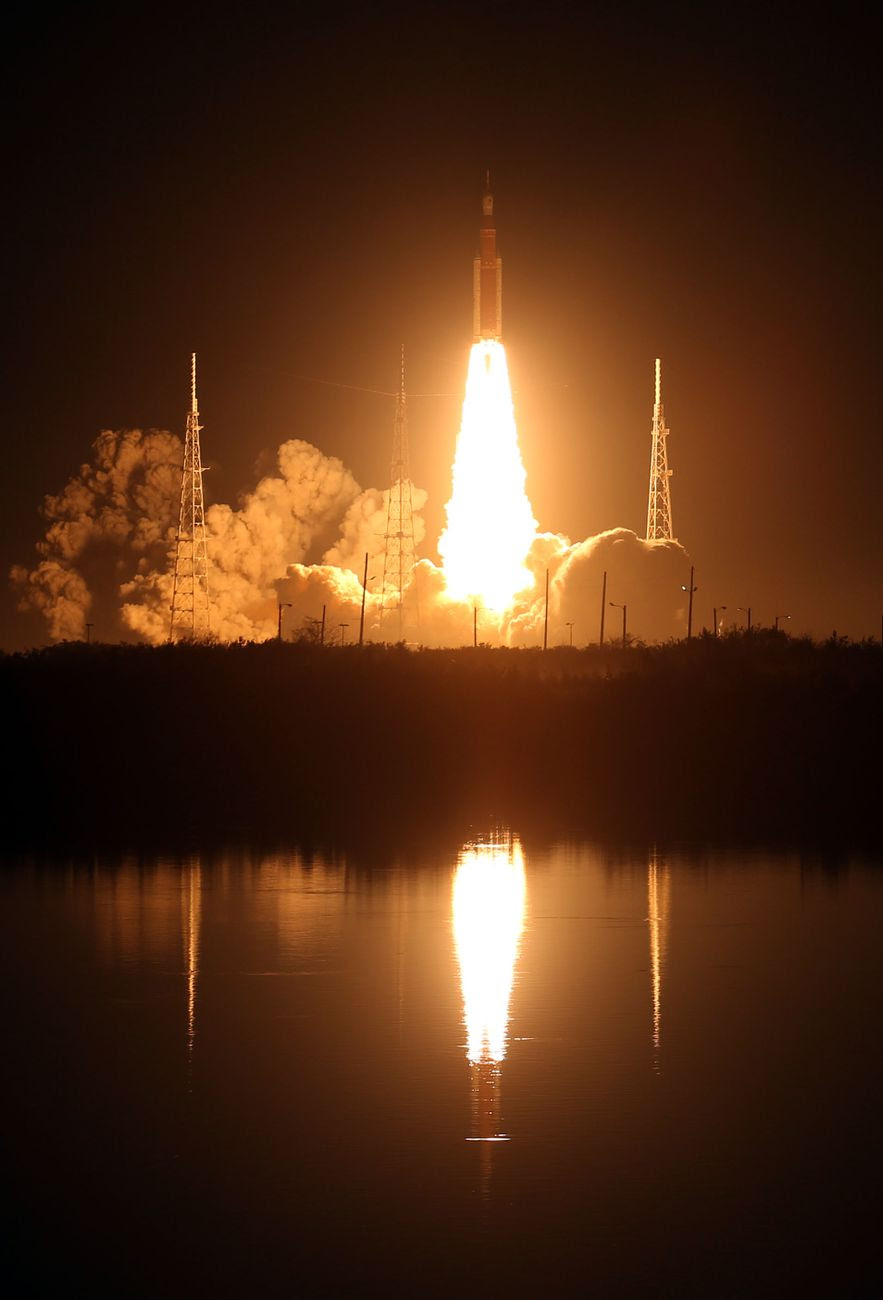 Artemis launches early today from Cape Canaveral, Fla. Photo: Red Huber/Getty Images
Artemis launches early today from Cape Canaveral, Fla. Photo: Red Huber/Getty Images
NASA’s Space Launch System rocket took flight for the first time early this morning, ushering in a new era of exploration for the space agency, Axios Space author Miriam Kramer writes.
- Why it matters:This uncrewed launch — called Artemis I — is expected to pave the way for NASA to one day send astronauts to the Moon for the first time since the end of the Apollo program in the 1970s.
The SLS — which took flight at 1:47 a.m. ET from Cape Canaveral — launched an Orion capsule that will journey around the Moon before coming back to Earth for a splashdown expected in December.
This is effectively a technology test before putting people on board.
- NASA aimsto land the first woman and first person of color on the Moon using the SLS and Orion in 2025.
1 big thing: Tonight’s beacon of hope
11.15.2022 PM AXIOS
 Source: NASA; Note: Not to scale and simplified for clarity; Graphic: Kavya Beheraj and Sarah Grillo/Axios
Source: NASA; Note: Not to scale and simplified for clarity; Graphic: Kavya Beheraj and Sarah Grillo/Axios
| After multiple delays, NASA is set to launch its Artemis I mission in tonight’s wee hours on a trip to circle the Moon, Axios Space author Miriam Kramer reports.
Why it matters: It will be the first launch of the huge Space Launch System rocket, which is a key component of the space agency’s plans to one day return people to the surface of the Moon by 2025. How to watch: The SLS is expected to take flight from Kennedy Space Center in Cape Canaveral, Florida, at 1:04 a.m. ET. · You can watch the launch live starting at 10:30 p.m. ET via NASA TV. Updated Nov 16, 2022 – Science |

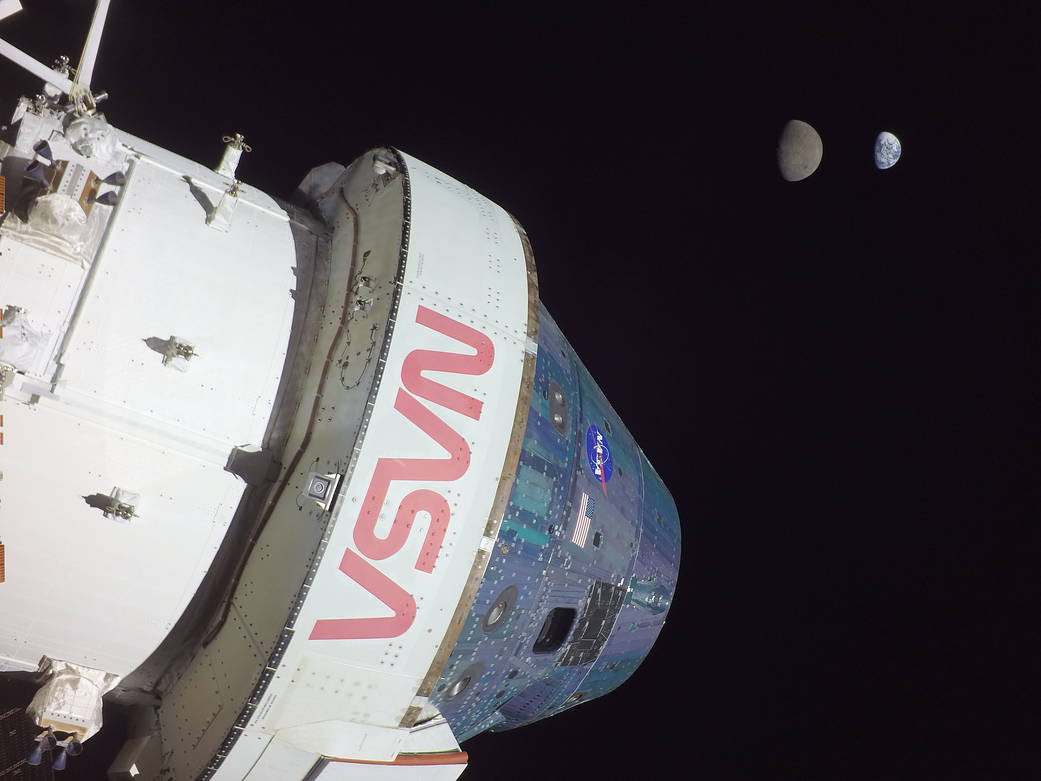



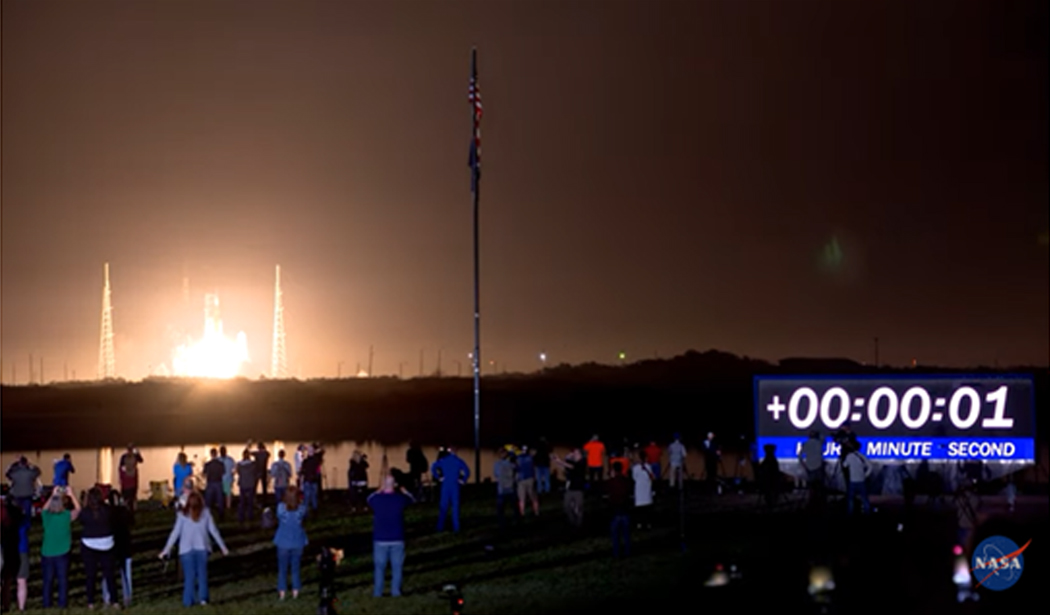
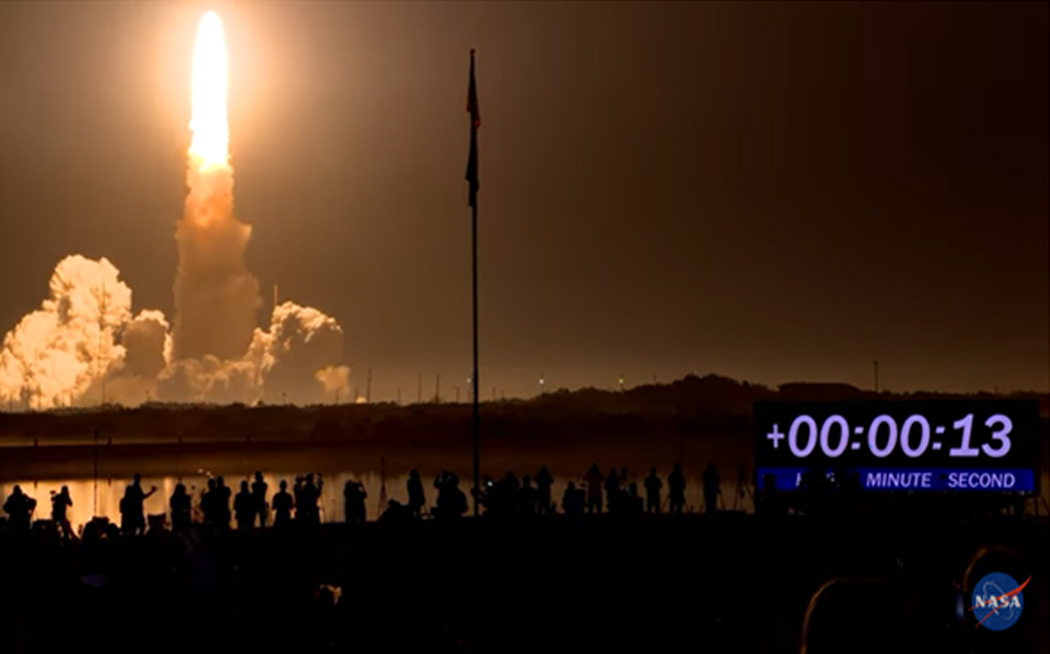
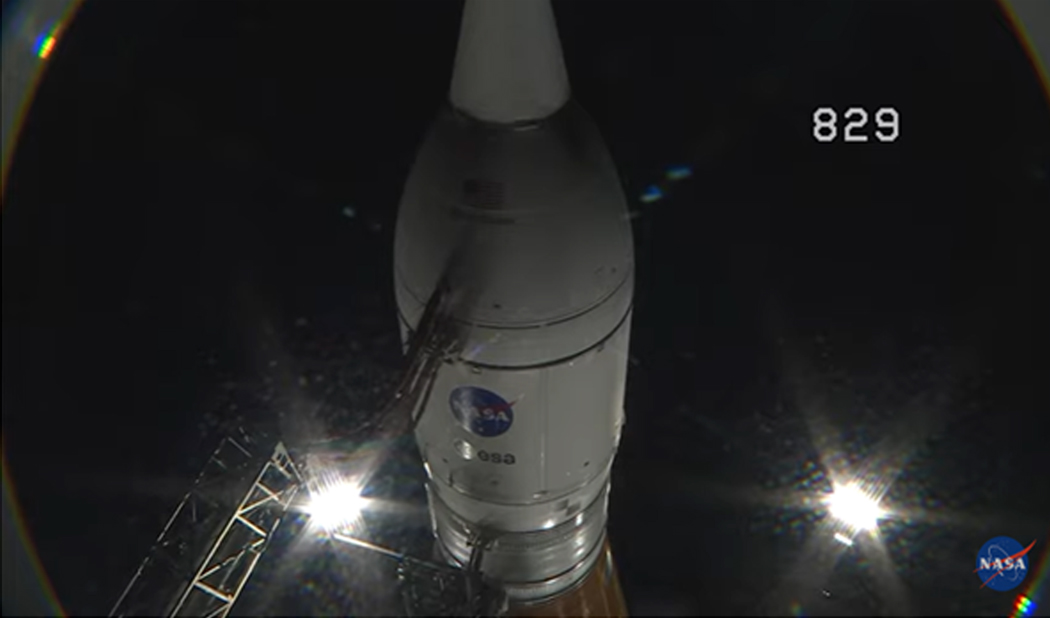
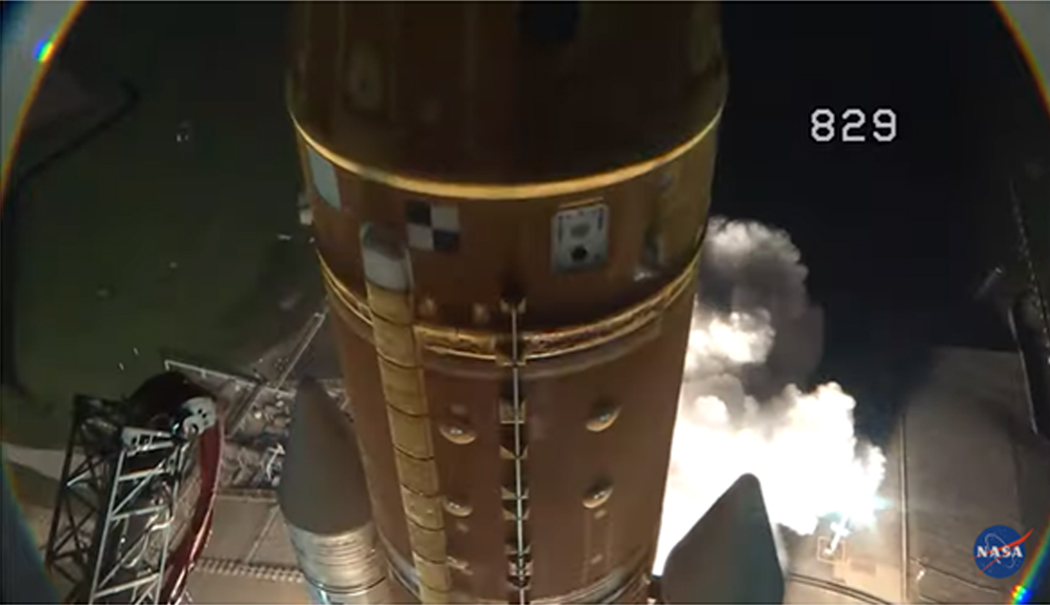
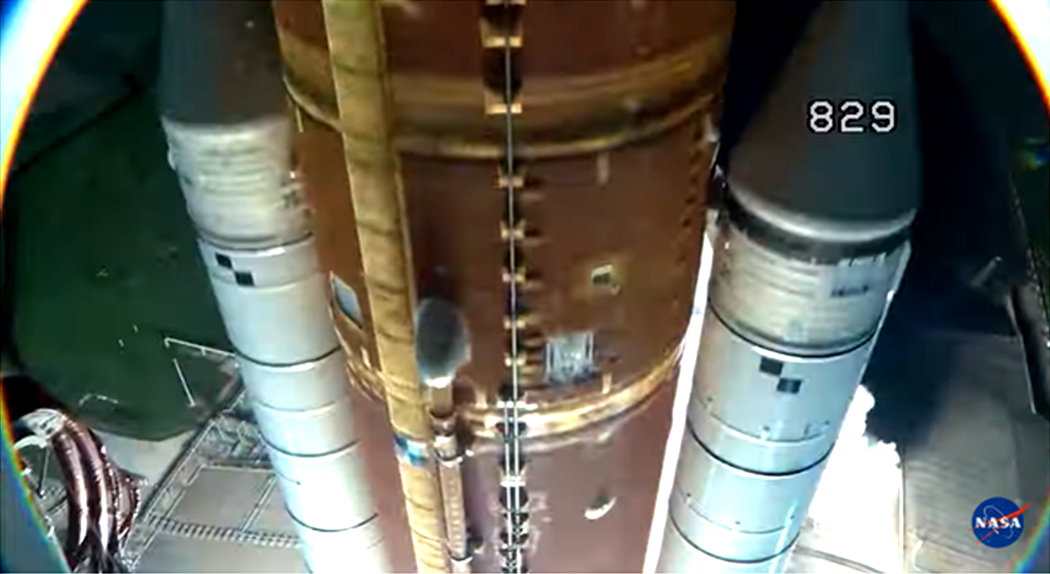

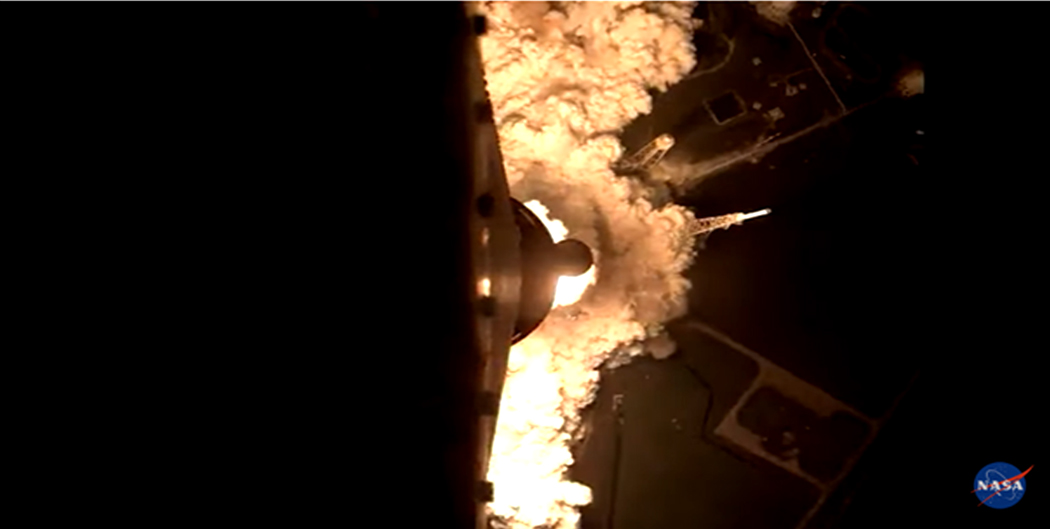

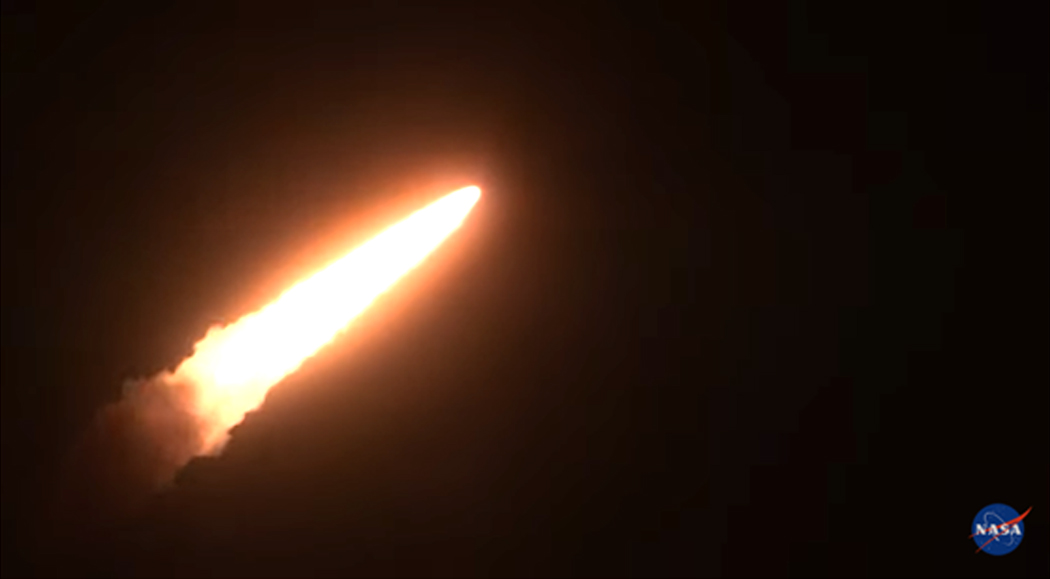



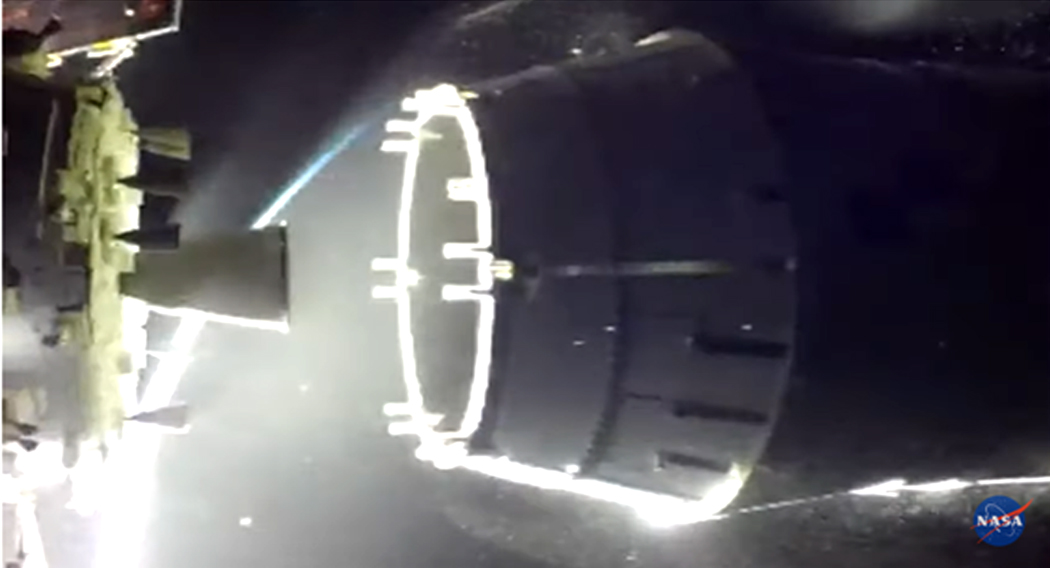
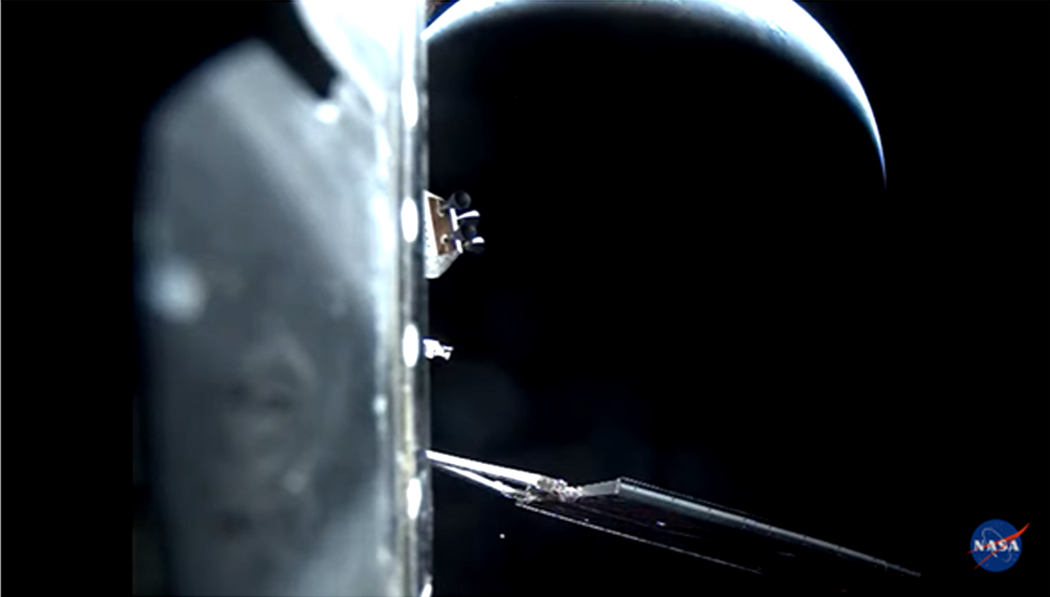
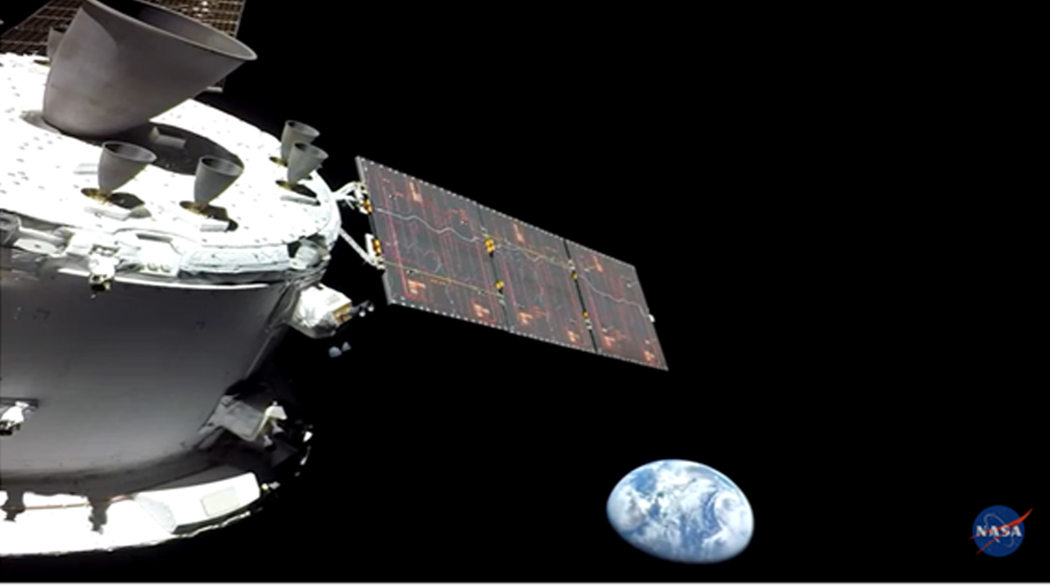
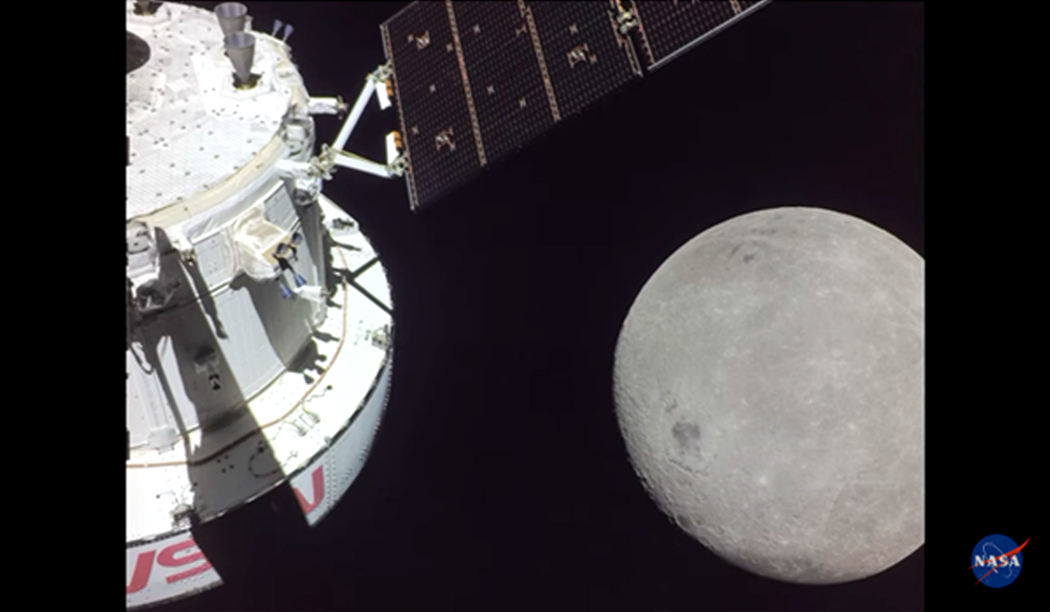
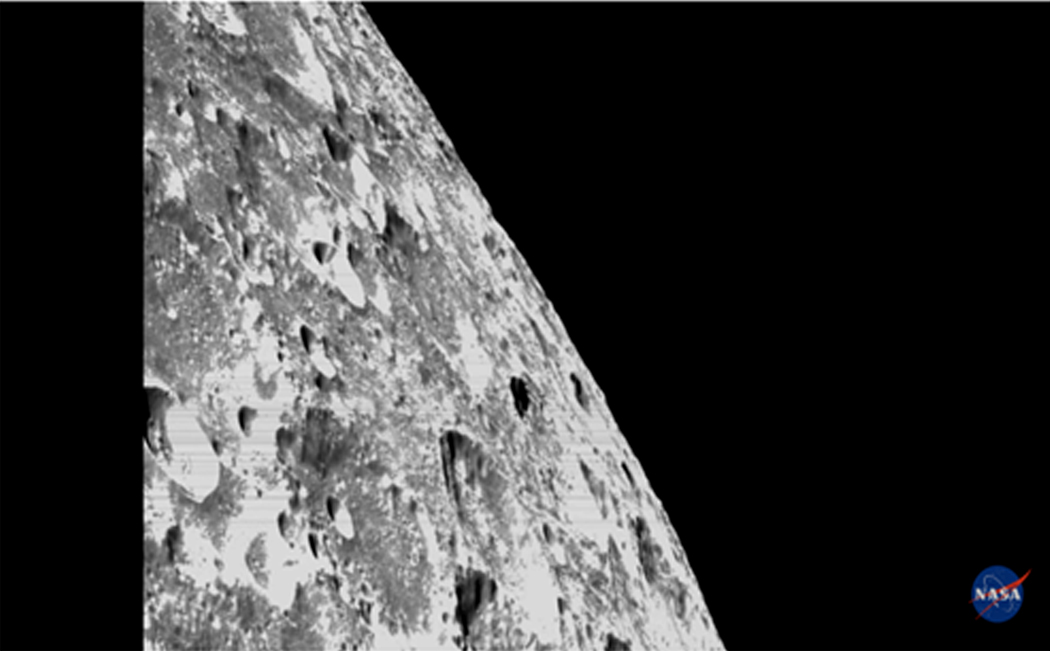

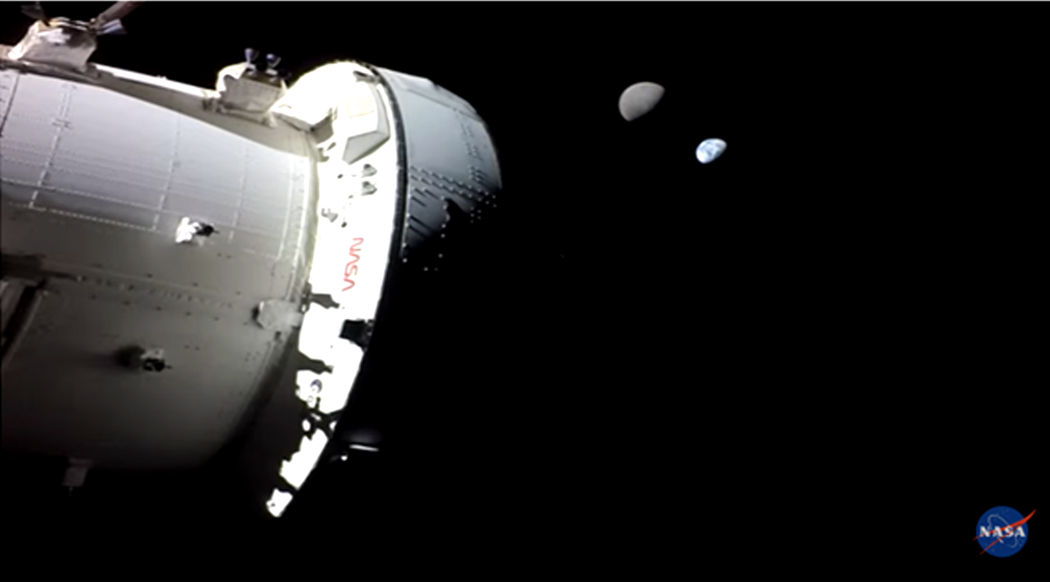
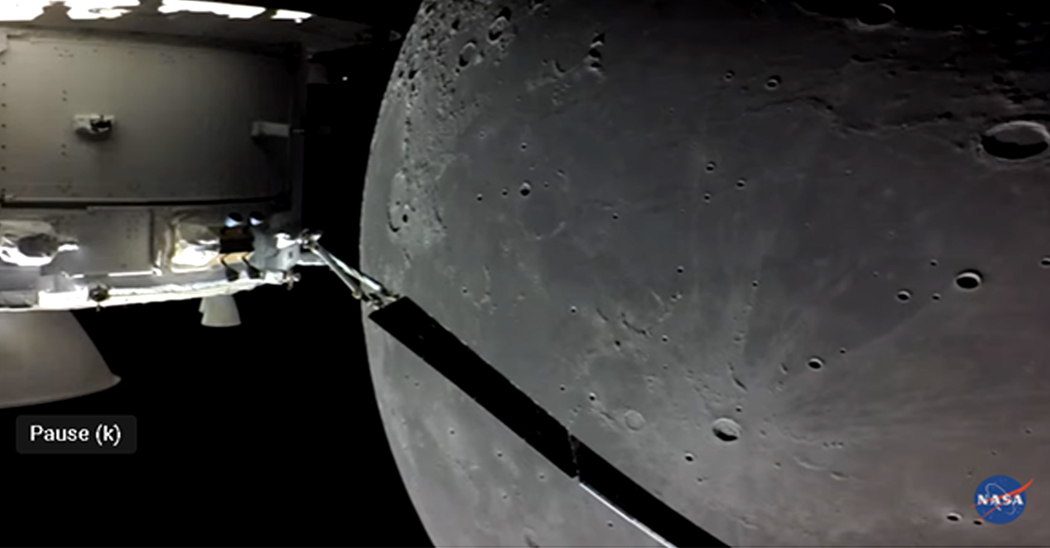

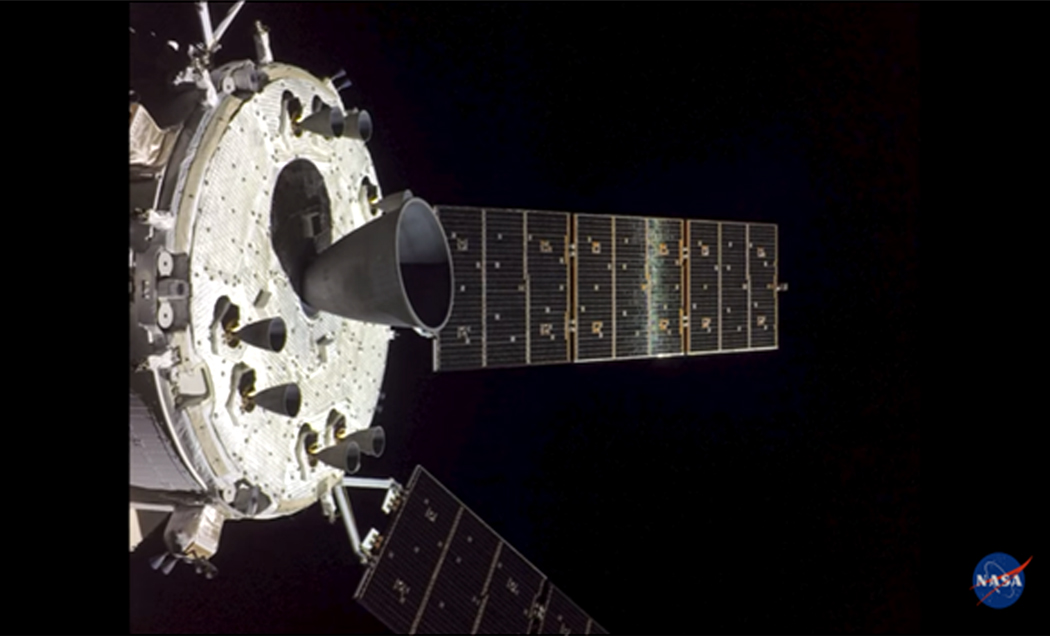


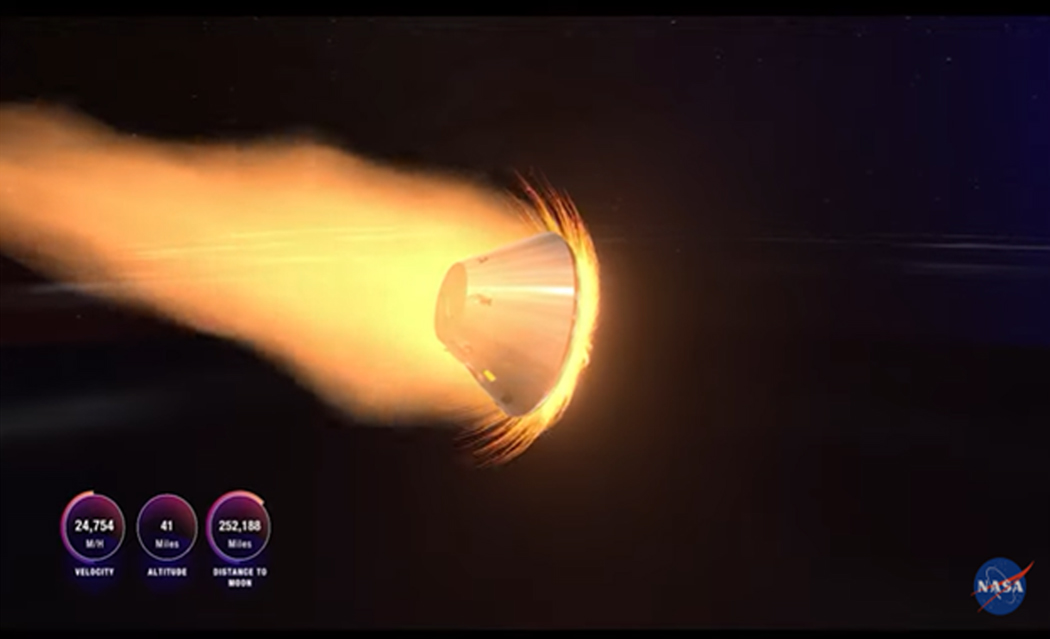
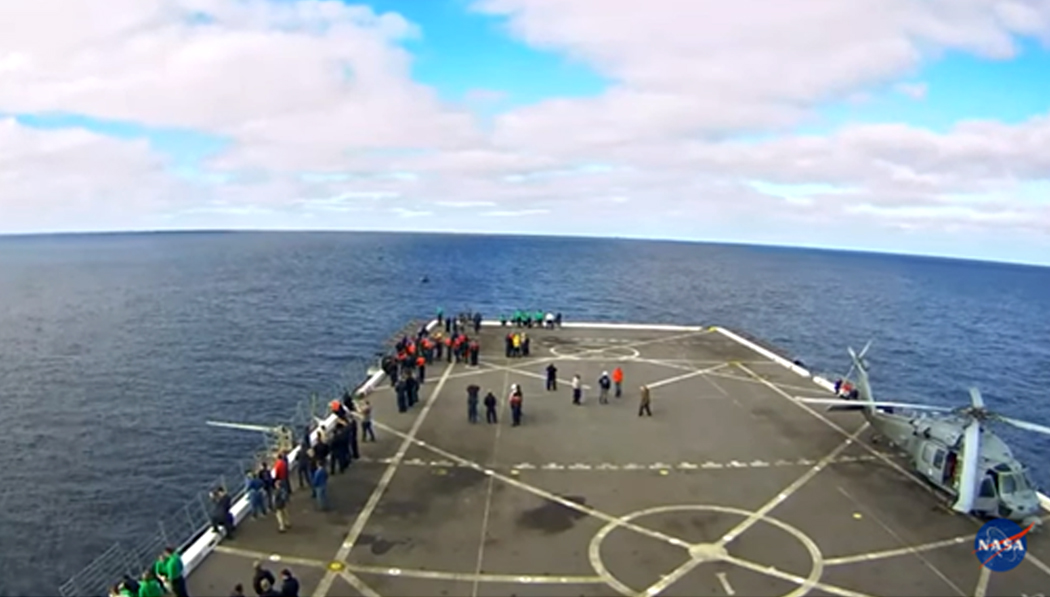
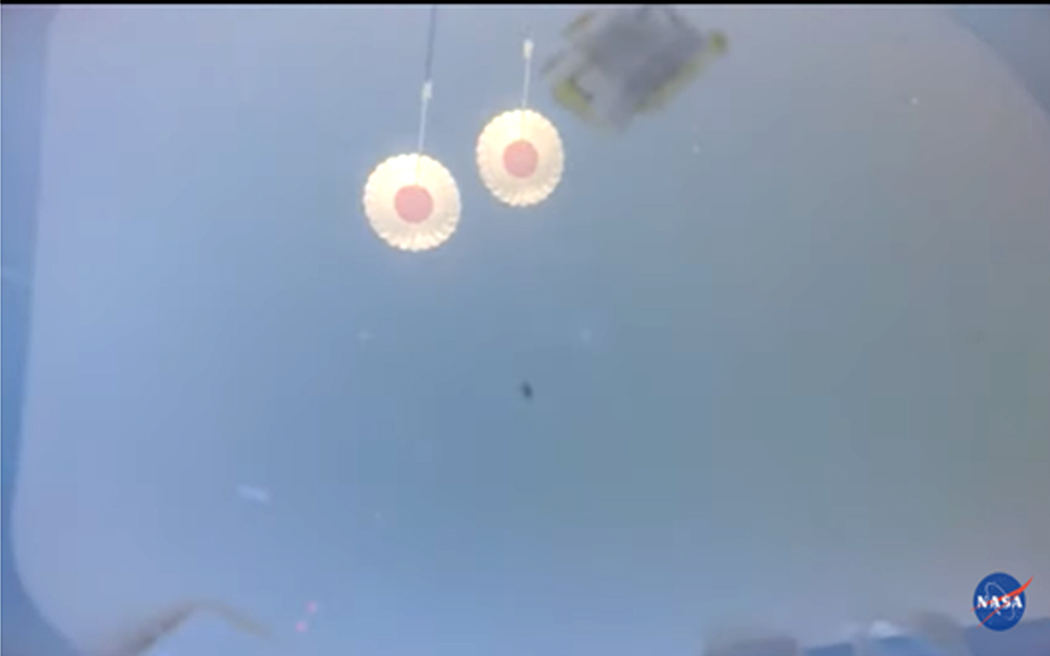
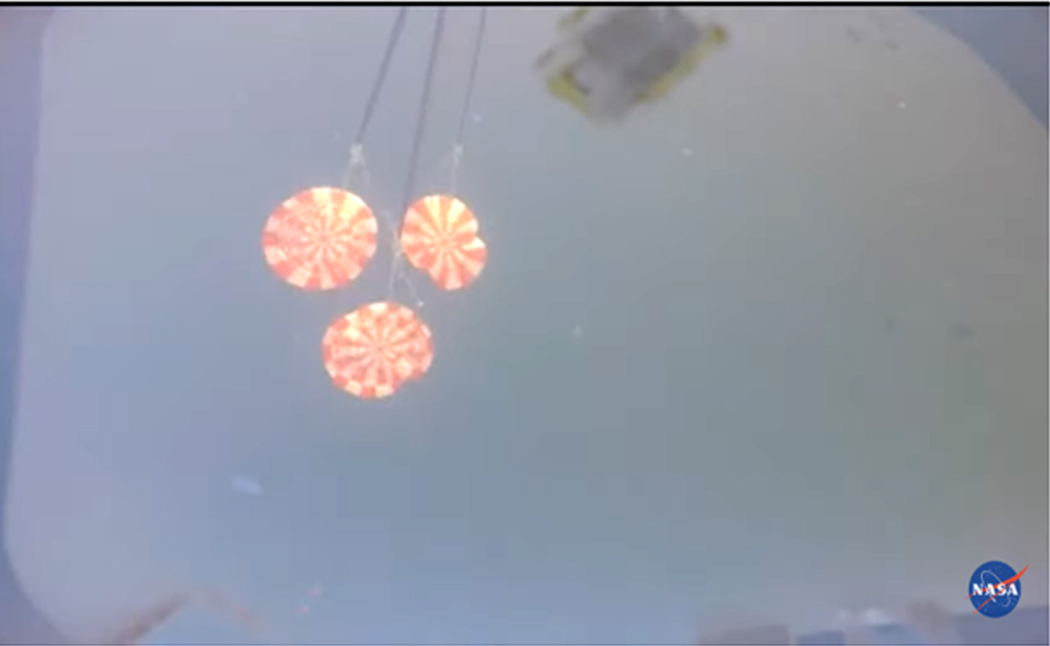

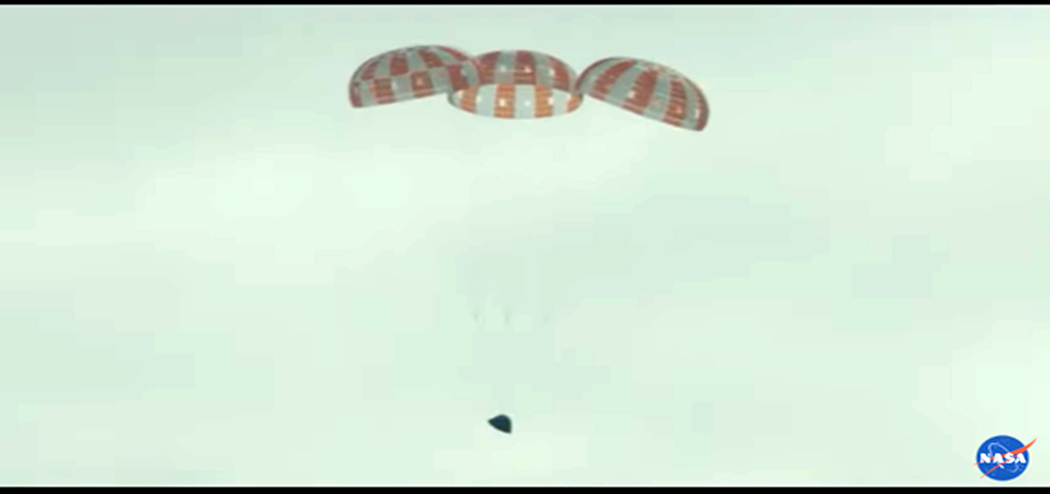


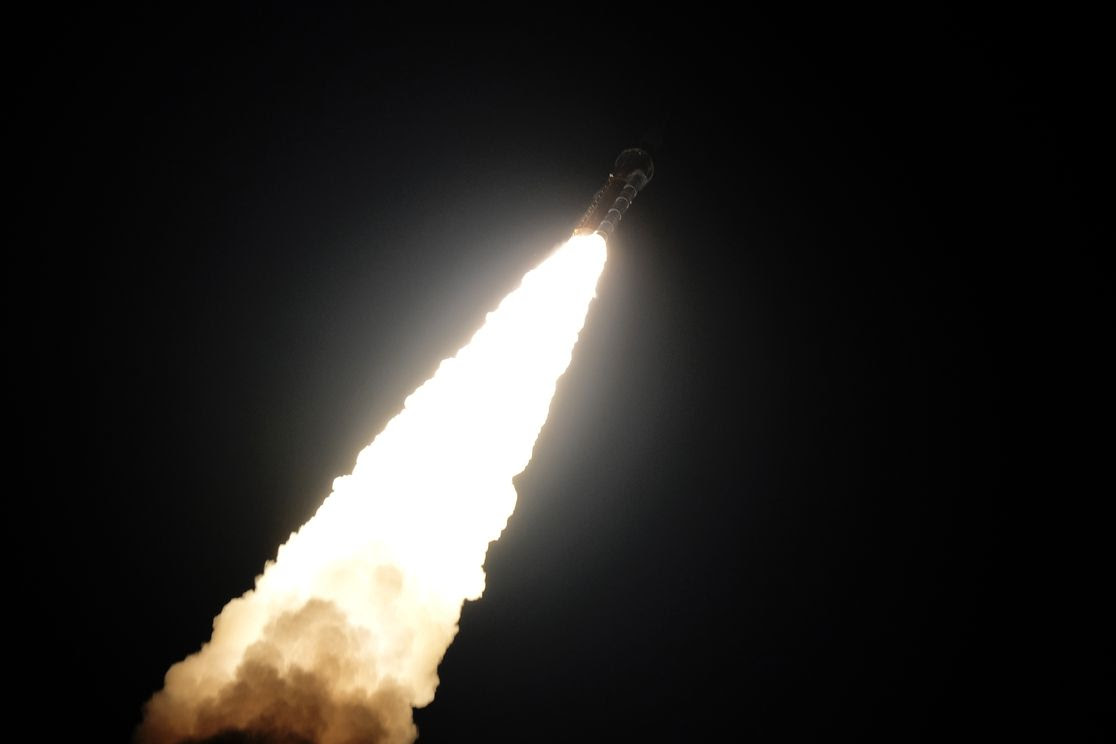
Leave a Reply